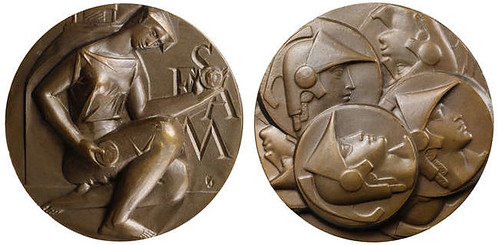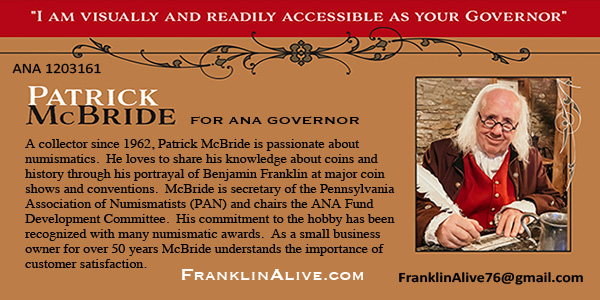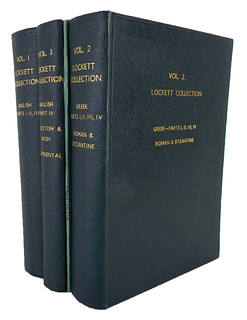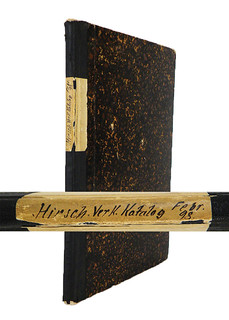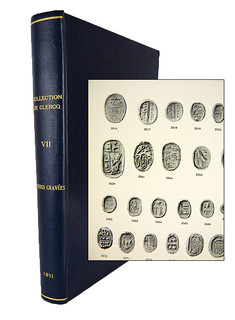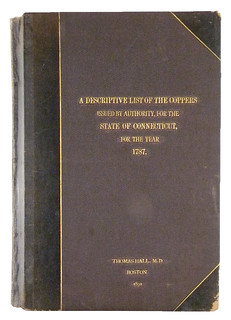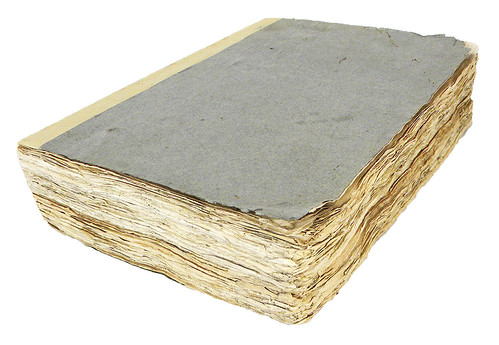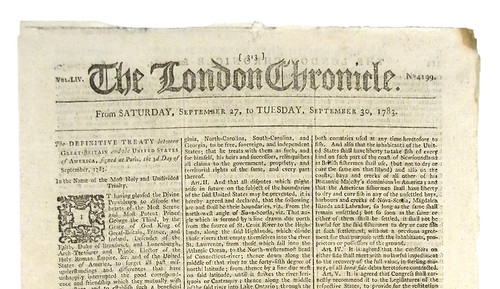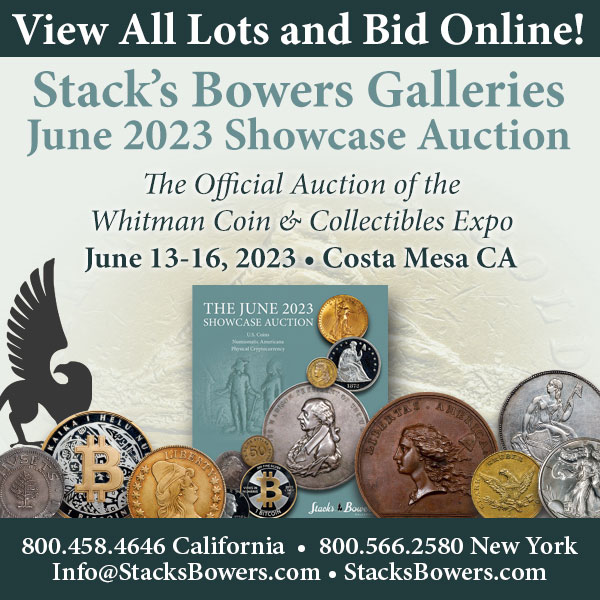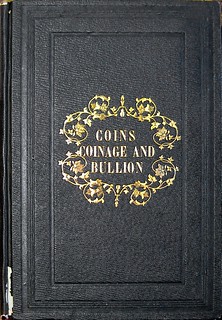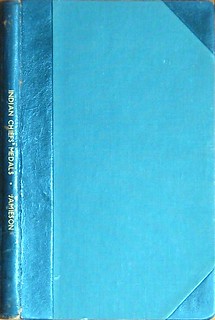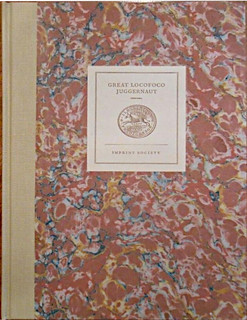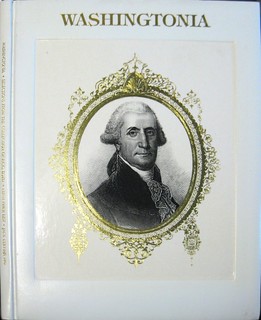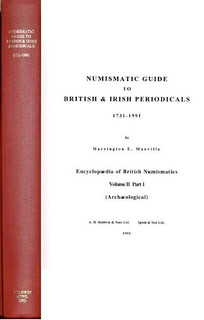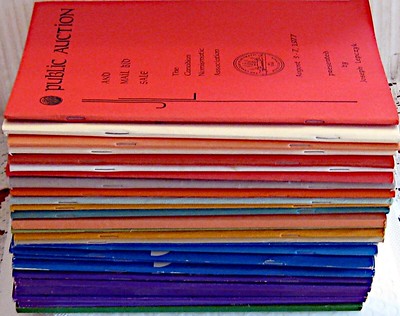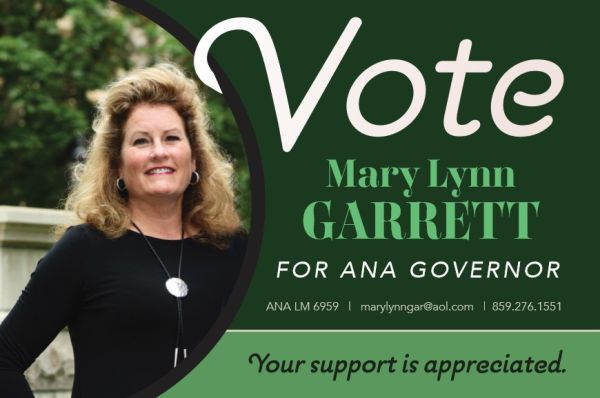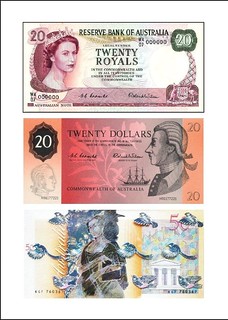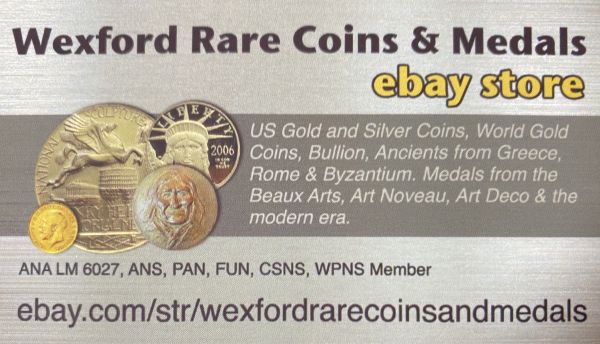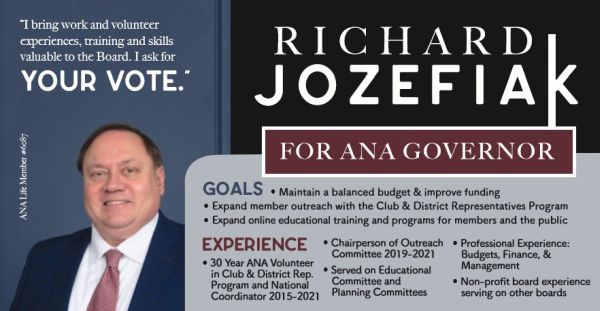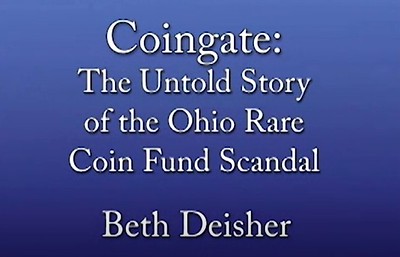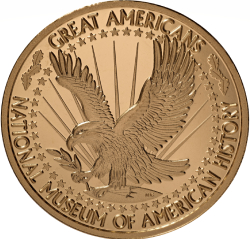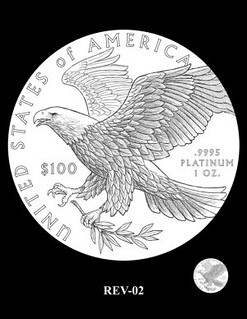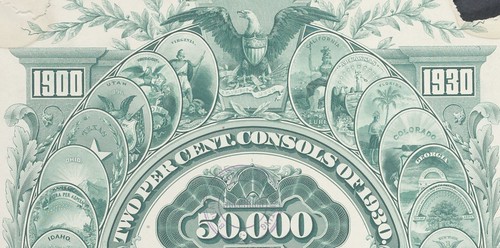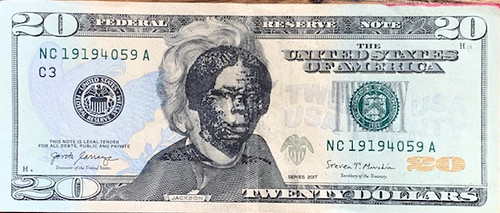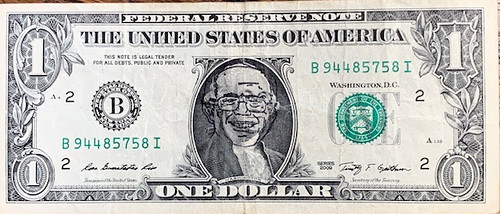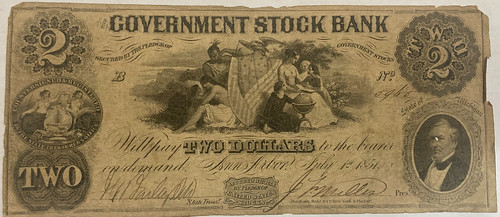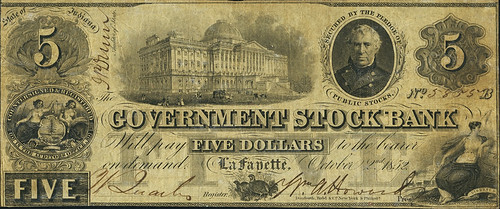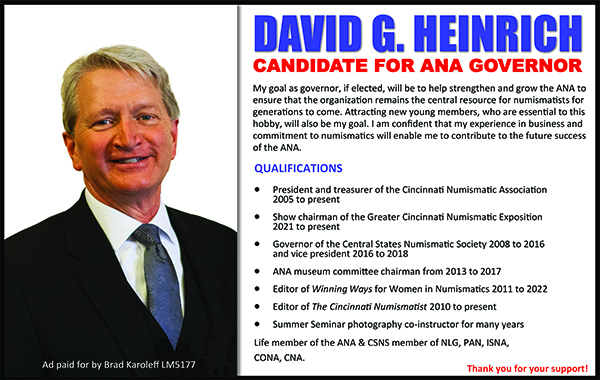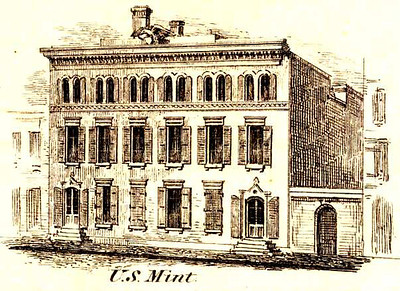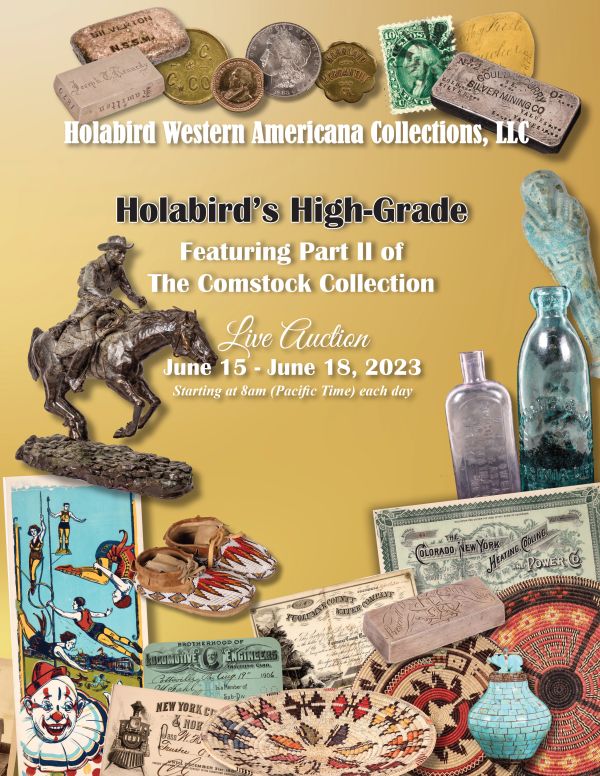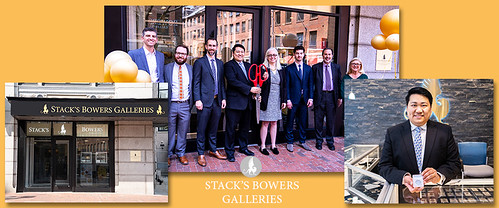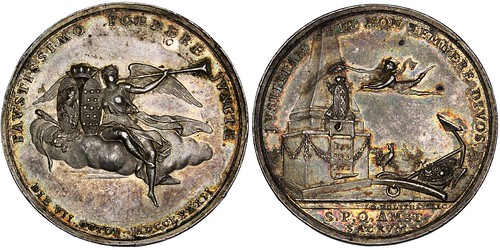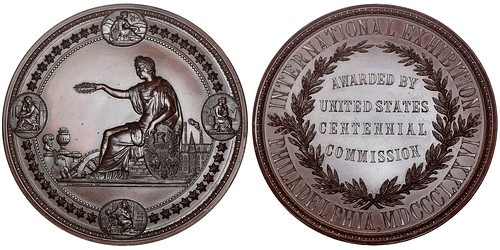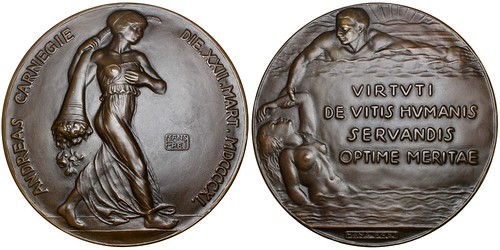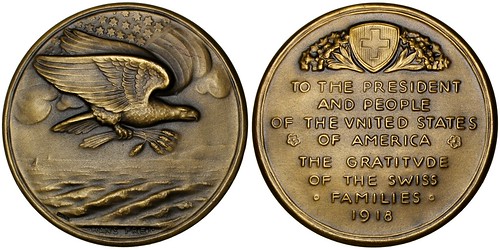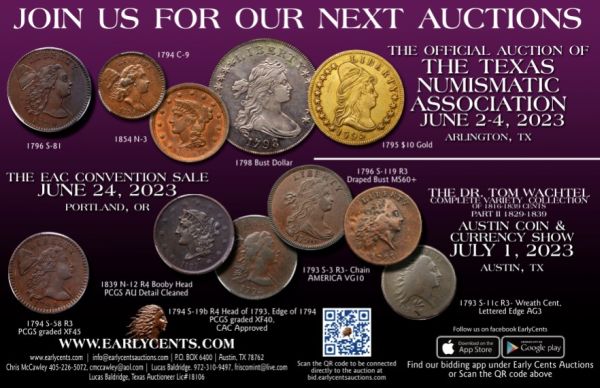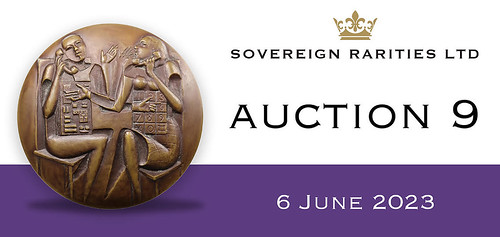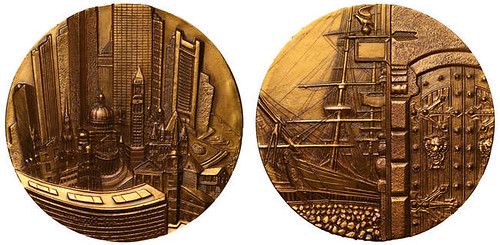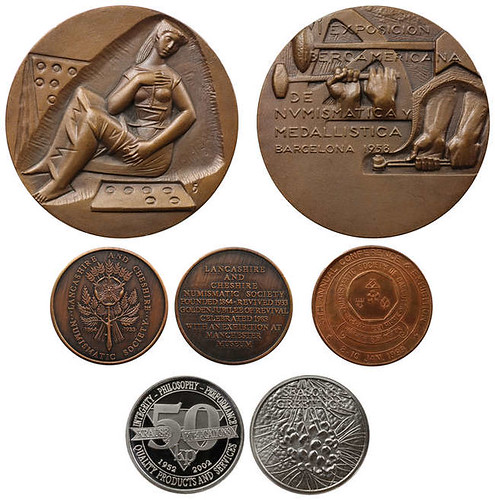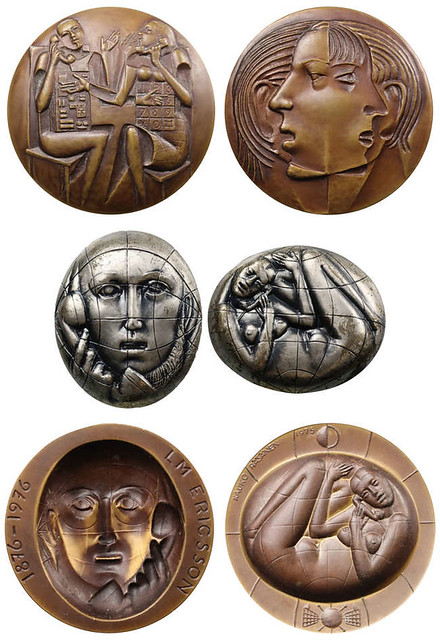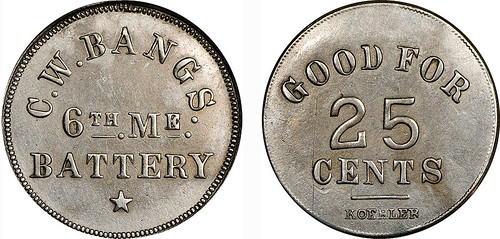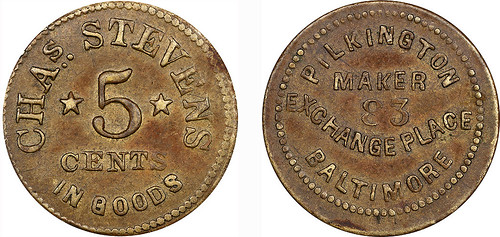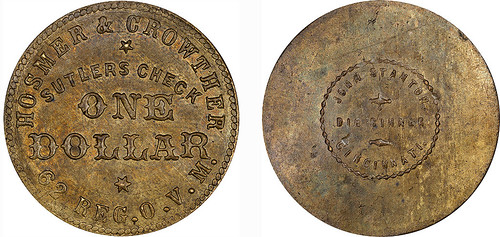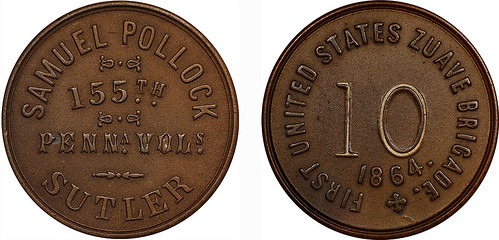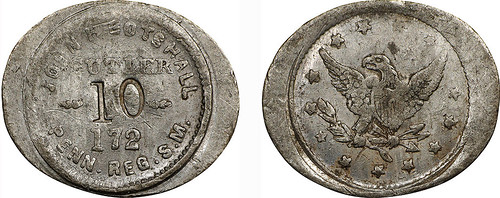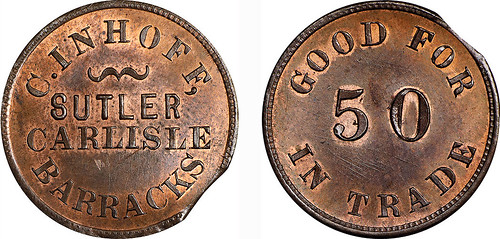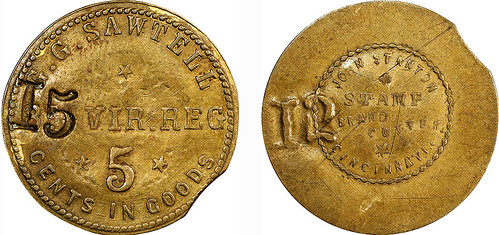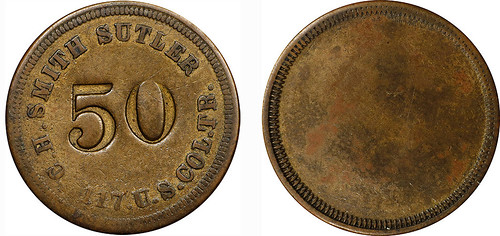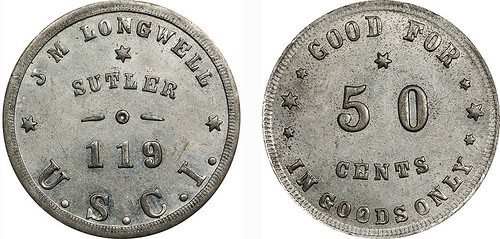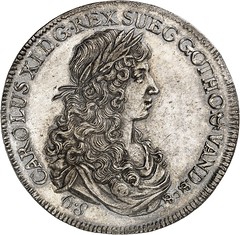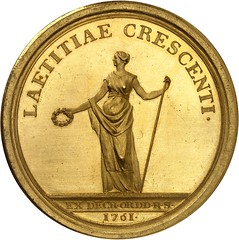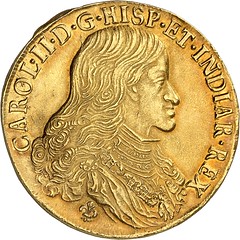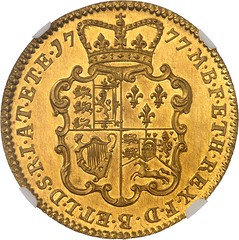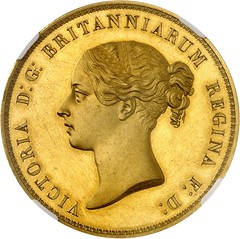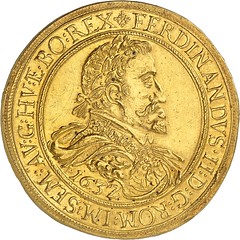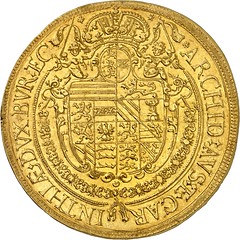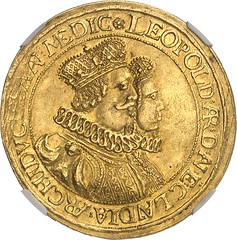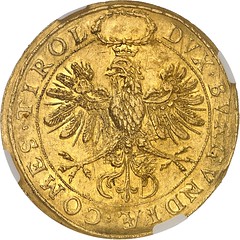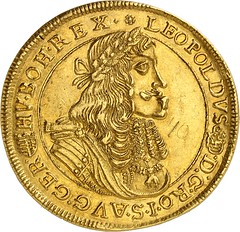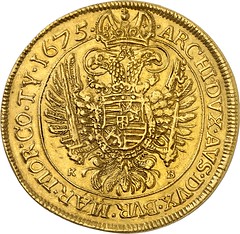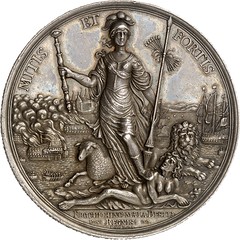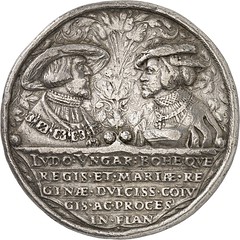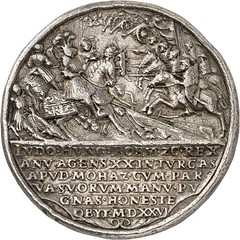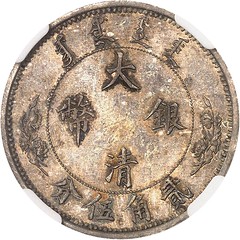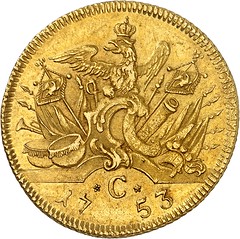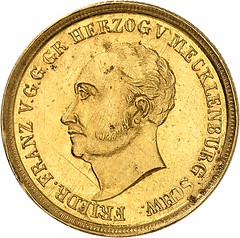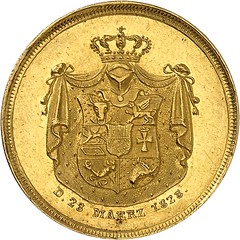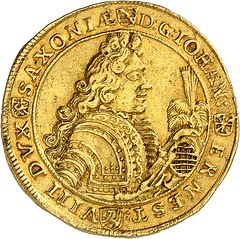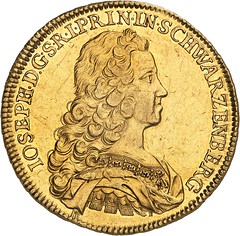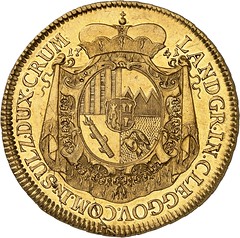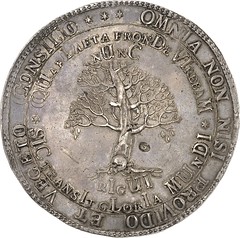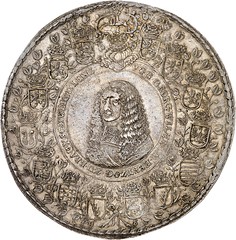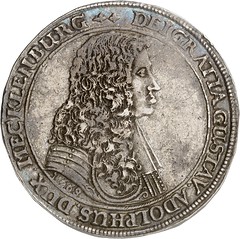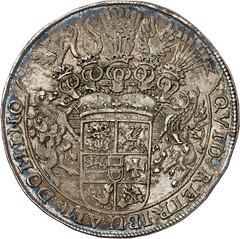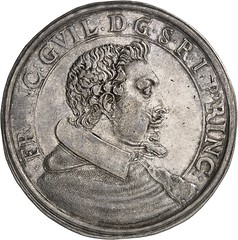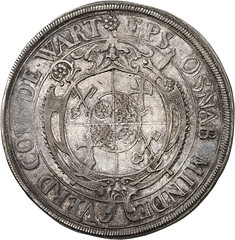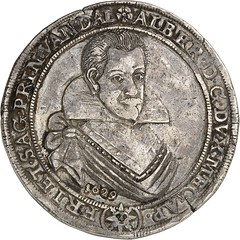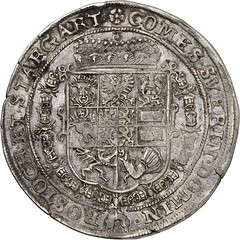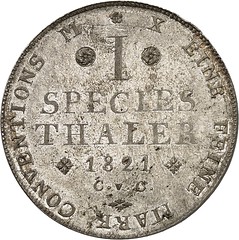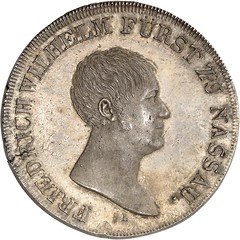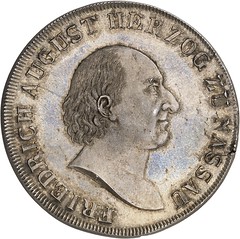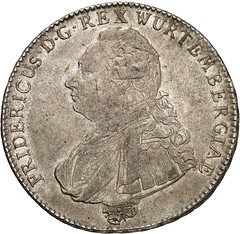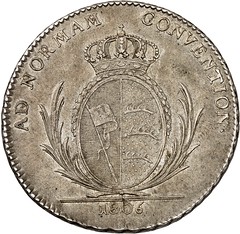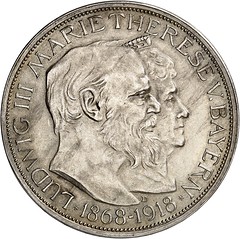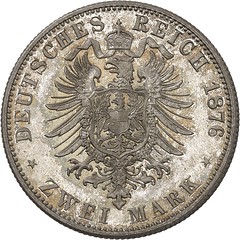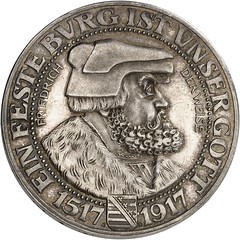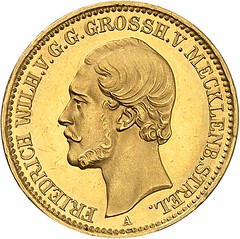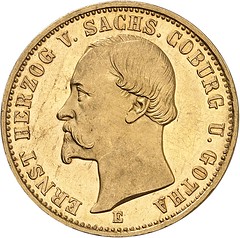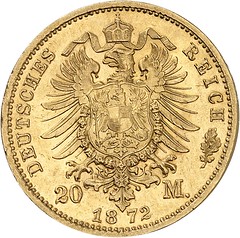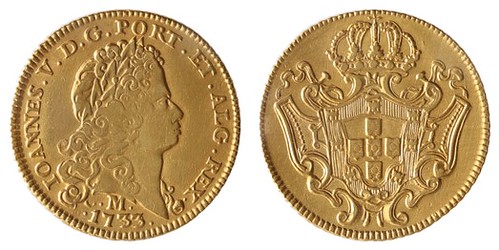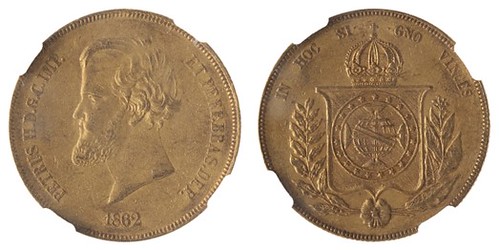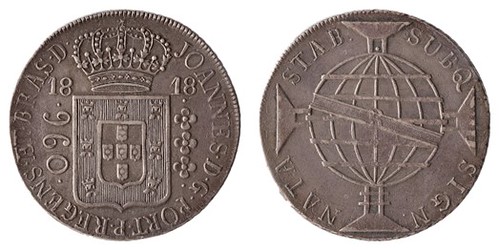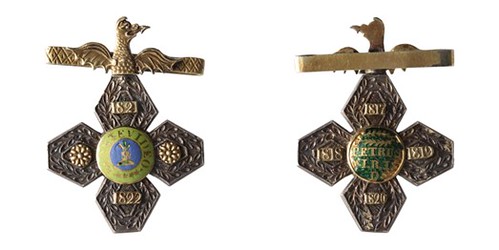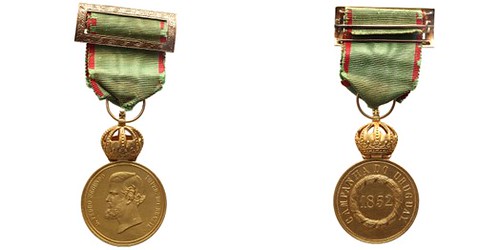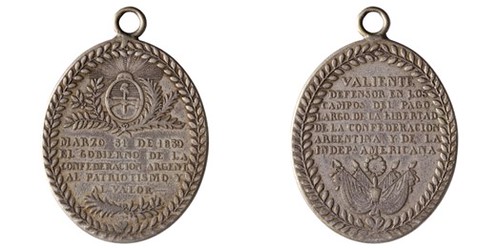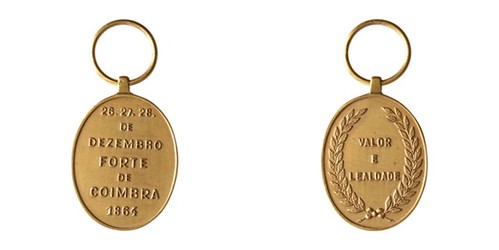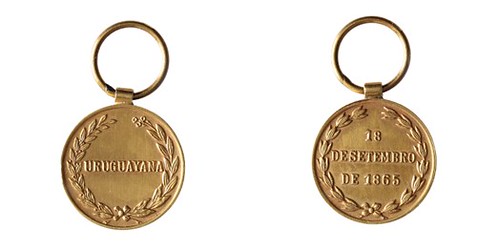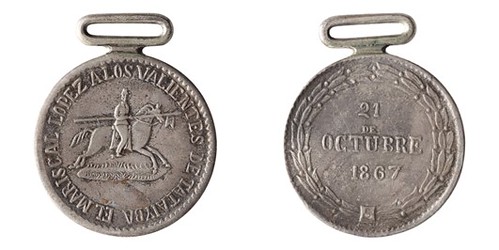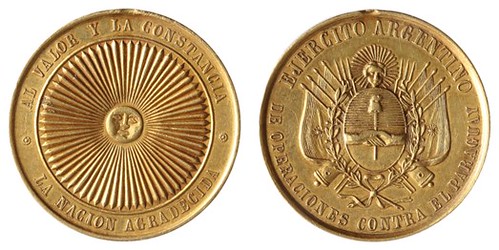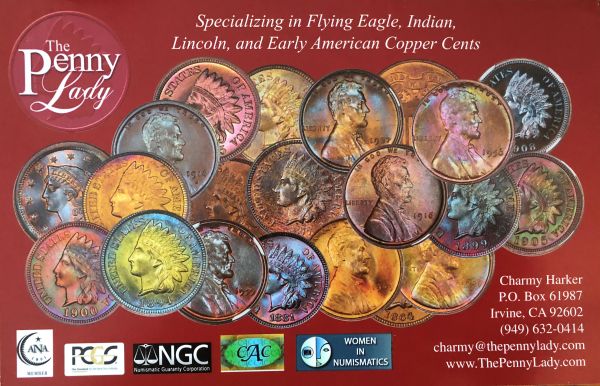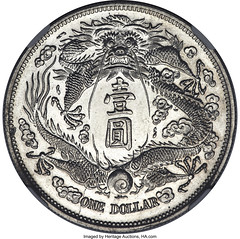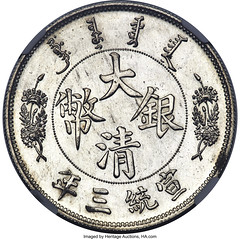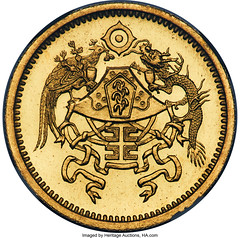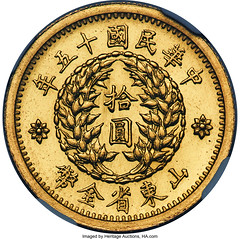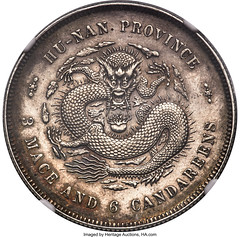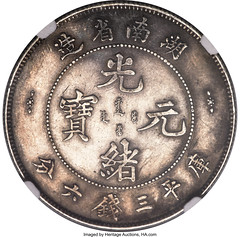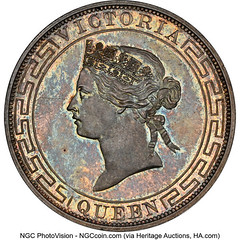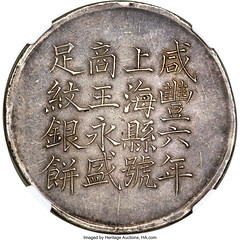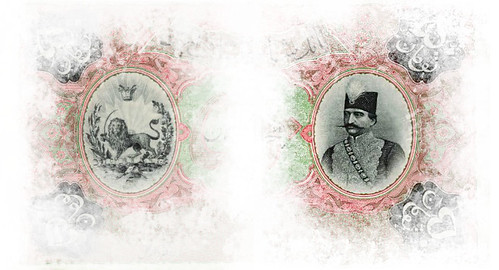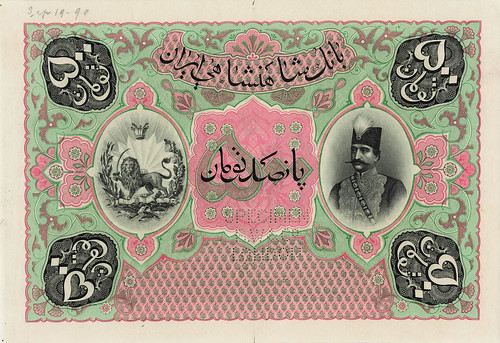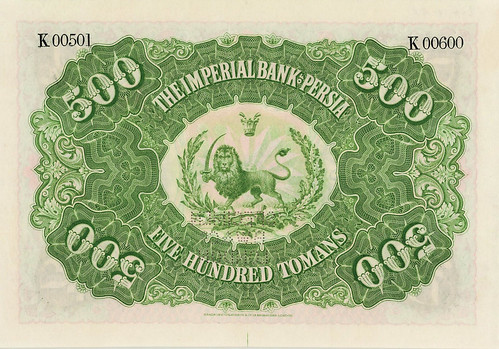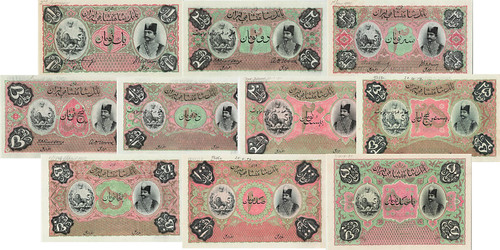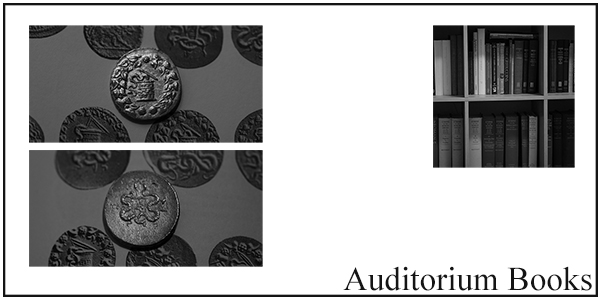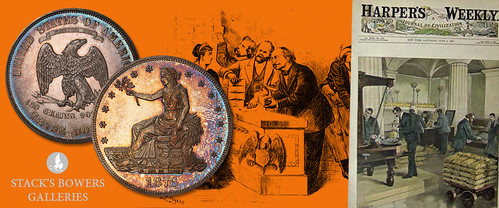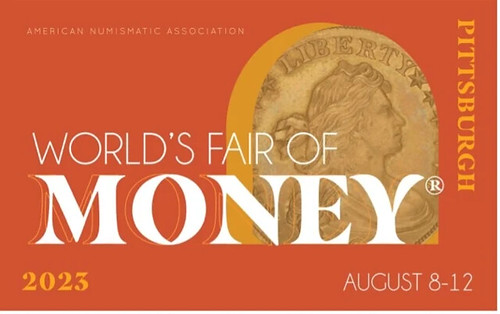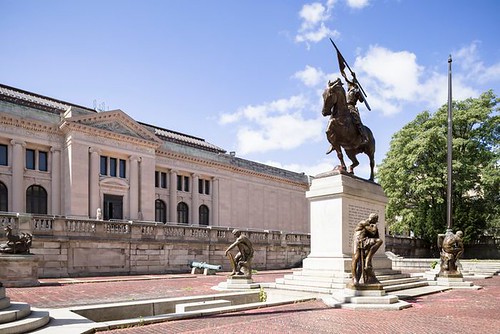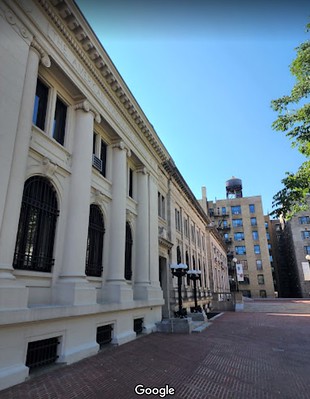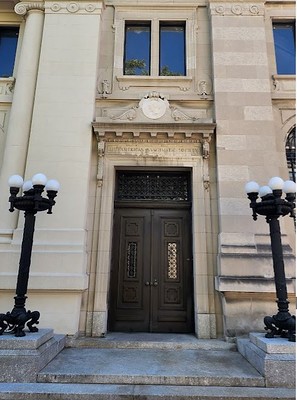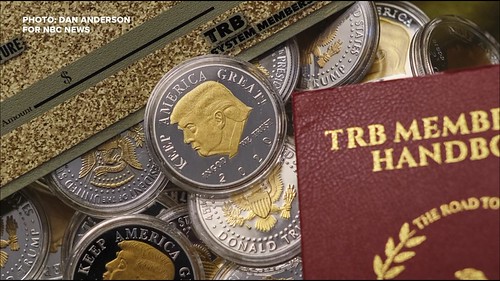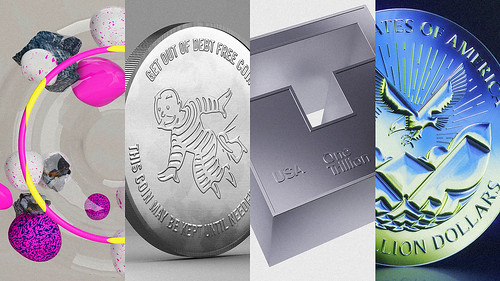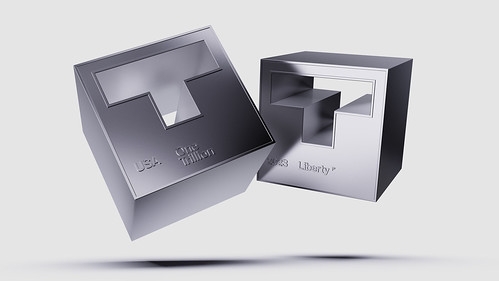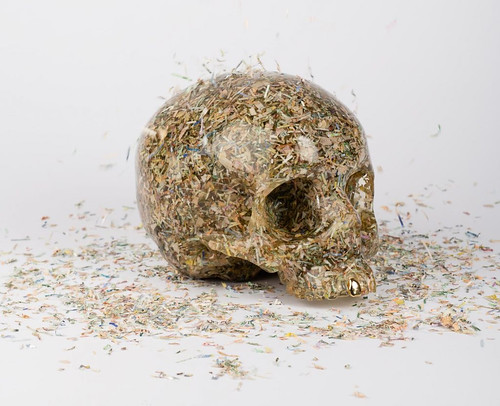
Visit our NBS Sponsors




About UsThe Numismatic Bibliomania Society is a non-profit association devoted to the study and enjoyment of numismatic literature. For more information please see our web site at coinbooks.org SubscriptionsThose wishing to become new E-Sylum subscribers (or wishing to Unsubscribe) can go to the following web page link MembershipThere is a membership application available on the web site Membership Application To join, print the application and return it with your check to the address printed on the application. Print/Digital membership is $40 to addresses in the U.S., and $60 elsewhere. A digital-only membership is available for $25. For those without web access, write to: Charles Heck, Treasurer AsylumFor Asylum mailing address changes and other membership questions, contact Chuck at this email address: treasurer@coinbooks.org SubmissionsTo submit items for publication in The E-Sylum, write to the Editor at this address: whomren@gmail.com BUY THE BOOK BEFORE THE COIN |
- WAYNE'S WORDS: THE E-SYLUM JUNE 4, 2023
- ASYLUM SUMMER 2023 ISSUE PUBLISHED
- NBS BIBLIOTALK PODCAST WITH DAN HAMELBERG
- KOLBE & FANNING JUNE 10, 2023 SALE HIGHLIGHTS
- STEVE TANENBAUM LIBRARY SALES JUNE 2023
- CHERRYPICKERS' GUIDE, 6TH EDITION, VOLUME II
- NEW BOOK: AUSTRALIAN DECIMAL BANKNOTES
- SCRIPOPHILY MAY 2023 ISSUE PUBLISHED
- NNP ADDS CATHOLIC MEDAL SOCIETY NEWSLETTER
- VIDEO: OHIO RARE COIN FUND SCANDAL
- NOTES FROM E-SYLUM READERS: JUNE 4, 2023
- S.F. MINT SUPERINTENDENT STEVENS PHOTO SOUGHT
- STACK'S BOWERS OPENS BOSTON LOCATION
- VOCABULARY TERMS: MULE, MULING
- CATHERINE ELIAS BULLOWA-MOORE (1919-2017)
- RICHARD LOBEL INTERVIEW PART FIVE
- NUMISMAGRAM MEDAL SELECTIONS: JUNE 4, 2023
- SOVEREIGN RARITIES AUCTION 9 MEDALS
- KELLY CIVIL WAR SUTLER TOKEN HIGHLIGHTS
- KUENKER JUNE 2023 AUCTION 387
- KUENKER JUNE 2023 AUCTION 388
- VILA RICA MOEDAS AUCTION 16
- HERITAGE JUNE 2023 HONG KONG SALE HIGHLIGHTS
- WBNA OFFERS RARE IMPERIAL BANK OF PERSIA NOTES
- TRADE DOLLARS RE-MONETIZED IN 1965
- COIN OF THE YEAR AWARDS MOVE TO ANA SHOW
- ANS OLD NEIGHBOR HISPANIC SOCIETY REOPENS
- COLORADO WAREHOUSE SHIPS TRUMP BUCKS
- THE MAN WHO INVENTED THE TRILLION-DOLLAR COIN
- ARTISTS' VISIONS OF TRILLION-DOLLAR COINS
- BRITISH ARTIST CREATES MONEY SKULLS
Click here to read the thin version on the web
Click here to subscribe
Click here to access the complete archive
To comment or submit articles, reply to whomren@gmail.com
Content presented in The E-Sylum is not necessarily researched or independently fact-checked, and views expressed do not necessarily represent those of the Numismatic Bibliomania Society.
WAYNE'S WORDS: THE E-SYLUM JUNE 4, 2023
 New subscribers this week include:
Michael Lang.
Welcome aboard!
New subscribers this week include:
Michael Lang.
Welcome aboard!
Thank you for reading The E-Sylum. If you enjoy it, please send me the email addresses of friends you think may enjoy it as well and I'll send them a subscription. Contact me at whomren@gmail.com anytime regarding your subscription, or questions, comments or suggestions about our content.
This week we open with two NBS updates, two numismatic literature sales, two new books, two updates from the Newman Numismatic Portal, and more.
Other topics this week include the Cherrypicker's Guide, Australian decimal banknotes, Catholic medals, the Ohio Rare Coin Fund, mules, tons of fixed price and auction previews, trade dollars, bastard coins, bundles of edelweiss, trillion-dollar coins and money skulls.
To learn more about the NBS Board of Trustees election, highlights of Dan Hamelberg's library, scripophily, Gilroy Roberts, Tom Noe, Bernie Sanders, Catherine Bullowa, the Government Stock Bank, the Swiss Gratitude to America medal, sutler tokens, the Long-Whiskered Dragon Dollar, and quasi-janiform images, read on. Have a great week, everyone!
Wayne Homren
Editor, The E-Sylum
ASYLUM SUMMER 2023 ISSUE PUBLISHED
The Summer 2023 issue of The Asylum is on the way from our sponsor, the Numismatic Bibliomania Society. Maria Fanning edits our print journal, and she submitted this report. -Editor
The Asylum Summer 2023 Issue
In this issue:
-
 A Bookbinder's Journey, Part 1: Jumping In By Jeff Dickerson
A Bookbinder's Journey, Part 1: Jumping In By Jeff Dickerson
- Howard A. Daniel III (1941–2023) By Roger Urce
- ASSOCIATIONS: Autographs • Annotations • Inscriptions Charles Ira Bushnell's Flandin's Catalogue of Coins and Medals: Part IV, Installment 2: The Winslow J. Howard Sale, May 17, 1856 By Joel J. Orosz
- My First Red Book By Mike Costanzo
- On Whether to Buy New Coin Catalogues or How to Grow Old Gracefully By David Pickup
Election time!
It's time to vote for NBS Board of Trustees, as well as The Asylum awards. Please read bios of the candidates in this issue and vote by June 30 using the ballots enclosed with your printed copy or by visiting the link below.
NBS Meeting and Symposium
Plans are being finalized for this year's NBS events at the ANA World's Fair of Money in Pittsburgh. We hope many of you will be able to join us to share your mania for numismatic literature. We are delighted to announce that our traditional Symposium will feature Harry Salyards discussing his recently published book titled Eagle Poised on a Bank of Clouds: The United States Silver Dollars of 1795–1798. Attendees will also have an opportunity to stop by the NBS club table to connect with fellow literature enthusiasts, view highlights from our charity auction and purchase an NBS commemorative coffee mug to support the NBS.
NBS Charity Auction
Our General Meeting will feature The Asylum author awards and our charity auction. We are grateful to David Fanning for graciously agreeing to accept and catalog items for the auction. While we appreciate all donations, we especially need items valued over $100. Please contact David at
df@numislit.com before sending your donations. Donations can be sent to: David Fanning, 141 W. Johnstown Road, Gahanna, Ohio 43230 and should be received by June 30th. Thank you for your generous support of the charity auction that is vital to the financial health of the NBS!
Fellowship Time
We would like to invite members to bring a rare, obscure or whimsical item or two to share during an informal fellowship time at the conclusion of official business at the General Meeting. The goal is to provide time for members to get better acquainted and meet like-minded enthusiasts.
Here is a list of the NBS schedule of events:
- Board Meeting Thursday August 10th from 11:30–1:00 in room 328
- Symposium Thursday August 10th from 1:00–2:30 in room 328
- General Meeting Friday August 11th from 11:30–1:30 in room 325
As I conclude my time as president, I want to share a heartfelt thank you to Vice President Len Augsburger, the Board of Trustees, Treasurer Chuck Heck, The Asylum Editor Maria Fanning, and The E-Sylum Editor Wayne Homren for their steadfast support. Also I want to extend a word of gratitude to the host of the NBS website, John Nebel, and webmaster Bruce Perdue, for all of their behind the scenes contributions. So please know whether you penned an article for The Asylum, contributed to the charity auction, hosted the club table, participated in a podcast or supported the NBS in any other way we are grateful for your support.
My hope is that each member will join me in finding ways to give back to our fine organization. May your library provide investigation, discovery and, most of all, enjoyment.
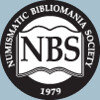 NBS Membership Renewal Time!
NBS Membership Renewal Time!
Please renew your membership in the NBS to continue receiving The Asylum. Go to
coinbooks.org to pay by PayPal or download a membership form today. Your current expiration date is printed to the right of your name on your subscription envelope, which should be arriving soon.
NBS BIBLIOTALK PODCAST WITH DAN HAMELBERG
The latest episode of the Numismatic Bibliomania Society podcast is now available for listening. It's on the NBS web site but also available elsewhere. Vice-President/Secretary Len Augsburger provided this report. -Editor
NBS Podcast Features Dan Hamelberg
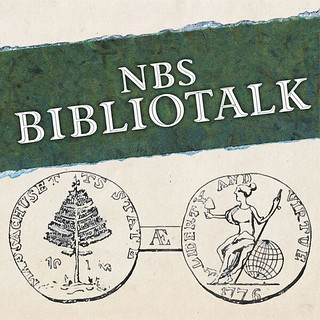 The latest episode of the NBS Bibliotalk podcast,
The latest episode of the NBS Bibliotalk podcast, Collection Highlights, with Dan Hamelberg
is now available on the NBS website and other popular podcasting platforms such as Buzzsprout. In this episode, Dan Hamelberg speaks about a number of favorite items in his library, including Henry Phillips' Historical Sketches with colonial currency examples, Breen's working copy of Walter Breen's Encyclopedia, Crosby's copy of Early Coins of America, and many more.
In between Dan adds any number of revealing stories, such as being stuck with a restaurant check by Walter Breen, visiting Eric Newman's vault at the Mercantile Bank in St. Louis, and how Jack Collins missed an important plate in a Chapman catalog. The NBS podcast is produced every other month by Lianna Spurrier of Numismatic Marketing.
I gave it a listen on Friday, and it's well worth spending some time with. While beginning numismatic bibliophiles may not recognize all the books and people mentioned, there's a lot we can all learn from Dan's great stories. -Editor
Link to Collection Highlights, with Dan Hamelberg
on the NBS podcast page:
https://www.coinbooks.org/resources/podcast.html
KOLBE & FANNING JUNE 10, 2023 SALE HIGHLIGHTS
Here's a final set of highlights in the upcoming June 10. 2023 Kolbe & Fanning numismatic literature sale. Good luck with your bidding! -Editor
 June 10 Kolbe & Fanning Auction
June 10 Kolbe & Fanning Auction
Kolbe & Fanning Numismatic Booksellers Sale 167 will be held on Saturday, June 10, 2023, and it promises to be a notable event. Featuring important offerings from the libraries of Louis E. Eliasberg, Sr., and Richard A. Eliasberg, along with other properties, the sale includes rare and out-of-print works on coins, medals, and paper money from antiquity to the present.
Some highlights of the sale include:
Lot 27: a handsomely bound copy of the 1901 first edition of Giovanni Dattari's classic work on Roman provincial coins of Alexandria
Lot 41: a complete set of the priced and plated editions of the Glendining catalogues of the Richard Cyril Lockett collection
Lot 51: Jacob Hirsch's first catalogue (1898), from his personal library
Lot 90: the important 1911 volume of the massive Louis De Clercq collection focusing on engraved gems
Lot 208: José Toribio Medina's massive 1902 account of Chilean coinage, one of his most important numismatic works
Lot 329: Louis Eliasberg's copy of the rare 1892 original of Dr. Thomas Hall's study of 1787 Connecticut coppers, in the original binding
Lot 128: an untrimmed copy of Johann Joachim Winckelmann's 1760 catalogue of the Baron de Stosch collection of engraved gemstones
Lot 191: a volume of Latin-American works from the library of Lyman Low, with an 1886 letter from Benjamin Betts
Lot 331: a handsome copy of the magnificently produced 1869 American Bond Detector by Laban Heath, with exceptional plates
Lot 366: a September 1783 printing of the Treaty of Paris ending the American Revolutionary War, which was signed earlier the same month.
Register early to bid online
Bids may be placed via post, email, fax or phone, as well as online. Kolbe & Fanning use Auction Mobility as our third-party online bidding platform. Auction Mobility is an app-based platform allowing users the ability to participate in the sale through phones, tablets and computers. To register for the sale, bidders must go to
bid.numislit.com and sign up. Once you have set up an account, you may browse lots, place advance bids, or participate in the live sale online. Those wishing to participate on their devices can download the Kolbe & Fanning app through the Apple or Google Play Store. The sale has also been listed on Biddr and NumisBids.
The printed catalogue has been mailed to all active customers on our mailing list. As international mail speeds have been inconsistent, we encourage our foreign clients to consult the electronic catalogue in case their printed catalogue does not arrive promptly. A PDF of the printed catalogue has been posted to our main website at numislit.com for those who prefer that format. Bids placed via post, email, fax or phone must be received by June 9, the day before the sale, in order for them to be processed. Advance absentee bids may also be placed at any time online at bid.numislit.com. Live internet bidding will be available during the sale itself through the same platform.
Kolbe & Fanning Numismatic Booksellers LLC is a licensed and bonded auction firm in the State of Ohio, and our sales are conducted by licensed auctioneers. For more information, please see the Kolbe & Fanning website at numislit.com or email David Fanning at df@numislit.com. To register for the sale, go to bid.numislit.com. We look forward to your participation.
To view the Catalogue PDF, see:
https://numislit.cdn.bibliopolis.com/images/upload/kolbefanningsale167.pdf
To read the earlier E-Sylum articles, see:
KOLBE & FANNING JUNE 10, 2023 SALE
(https://www.coinbooks.org/v26/esylum_v26n21a02.html)
KOLBE & FANNING JUNE 10, 2023 SALE HIGHLIGHTS
(https://www.coinbooks.org/v26/esylum_v26n22a02.html)
STEVE TANENBAUM LIBRARY SALES JUNE 2023
As noted last week, Steve Hayden has been handling the dispersal of the numismatic library for the estate of token dealer Steve Tanenbaum. Several new lots are available for bidding on eBay under his seller ID "stevehayden". Here are some more selected items. In an email to clients last week, Steve H. wrote: "We have also returned to the Tanenbaum Library which we have been selling off and on for the last four years. For the rest of the summer look for many interesting books, auction catalogs and odd and ends from this extensive collection both at fixed price and auction." -Editor
1852 3rd Edition New Varieties of Gold and Silver Coins by Eckfeldt & Du Bois
Leather Bound 1936 Medals Awarded to North America Indian Chiefs by Jamieson
Great Locofoco Juggernaut by Malcolm Johnson 1971 35 Page Hardcover Banknote
Washingtonia Hardcover Leather 1991 Ford Collection Price List by Jack Collins
Numismatic Guide to British & Irish Periodicals 1731-1991 Hardcover 449 Pages
(27) Different Joseph Lepczyk Auction Catalogs 1977-1984
To view Steve's book offerings, see:
https://www.ebay.com/str/stevehayden/Books/_i.html?store_cat=24750883014
To read the earlier E-Sylum article, see:
MORE STEVE TANENBAUM LIBRARY SALES
(https://www.coinbooks.org/v26/esylum_v26n22a03.html)
CHERRYPICKERS' GUIDE, 6TH EDITION, VOLUME II
Dennis Tucker of Whitman Publishing forwarded this press release for the new edition of volume 2 of the Cherrypicker's Guide. Thanks. -Editor
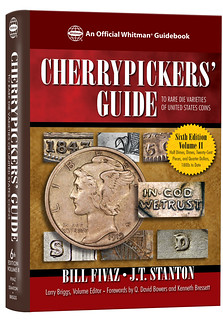 Whitman Publishing announces the upcoming release of the newest Cherrypickers' Guide to Rare Die Varieties. The sixth edition, volume II, will debut in August 2023 at the American Numismatic Association World's Fair of Money in Pittsburgh, Pennsylvania. In the meantime, the 320-page spiralbound-hardcover book can be preordered for $39.95 online, including at Whitman.com. After the ANA show the Cherrypickers' Guide will be available from booksellers nationwide.
Whitman Publishing announces the upcoming release of the newest Cherrypickers' Guide to Rare Die Varieties. The sixth edition, volume II, will debut in August 2023 at the American Numismatic Association World's Fair of Money in Pittsburgh, Pennsylvania. In the meantime, the 320-page spiralbound-hardcover book can be preordered for $39.95 online, including at Whitman.com. After the ANA show the Cherrypickers' Guide will be available from booksellers nationwide.
To cherrypick
is to examine coins that appear normal at first glance, seeking those with unusual characteristics—overdates, repunched mintmarks, doubled and tripled dies, and similar features—that reveal them to be rare and valuable. The Cherrypickers' Guide uses close-up photographs and text descriptions to show collectors what to look for. It includes rarity ratings and retail values in multiple grades.
For the latest volume, Cherrypickers' Guide coauthor Bill Fivaz and professional numismatist Larry Briggs coordinated edits and updates. They reached out to the hobby community for advice, recommendations, research, market analysis, and photographs. The new volume features more than 440 die varieties, including nearly 80 new additions. The book covers Capped Bust and Liberty Seated half dimes, dimes, and quarters; Barber dimes and quarters; Mercury dimes; Roosevelt dimes; twenty-cent pieces; Standing Liberty quarters; and Washington quarters, including the State, D.C., Territorial, and National Park series.
Picking up from there, volume III of the sixth edition is slated to debut in 2024. It will cover Capped Bust, Liberty Seated, and Barber half dollars, plus Liberty Walking, Franklin, and Kennedy half dollars, trade dollars, Morgan and Peace silver dollars, modern dollar coins, gold coins (dollars through double eagles), classic commemoratives, bullion, and coins struck for the Philippines under U.S. sovereignty.
Bill Fivaz, a coin collector since 1950, has earned recognition as one of the country's most respected authorities on numismatic errors and die varieties. He is a longtime contributor to the Guide Book of United States Coins (the Red Book
), a past governor of the American Numismatic Association, and a past member of the United States Mint's Citizens Coinage Advisory Committee. With the late J.T. Stanton he published the first Cherrypickers' Guide in 1990, launching the modern boom in interest in die varieties.
Volume editor Larry Briggs is well known to the hobby community as a dealer, author, and educator. He was president of the American Numismatic Association's Authentication Committee. A student of history and archaeology, Briggs served in the U.S. Air Force and worked for Ford Motor Company before launching his own business, Larry Briggs Rare Coins, in 1978. His specialties include error coins and die varieties, Liberty Seated coinage, and early American coppers.
Cherrypickers' Guide to Rare Die Varieties of United States Coins, sixth edition, volume II.
By Bill Fivaz and J.T. Stanton; forewords by Kenneth Bressett and Q. David Bowers; edited by Larry Briggs.
Publication date: August 2023. Retail $39.95. 320 pages, 6 x 9 inches, spiralbound hardcover.
To read the earlier E-Sylum article, see:
NEW BOOK: CHERRYPICKERS' GUIDE, 6TH EDITION, VOLUME I
(https://www.coinbooks.org/esylum_v18n30a04.html)
NEW BOOK: AUSTRALIAN DECIMAL BANKNOTES
A new book by Michael Vort-Ronald examines Australian decimal banknotes and designs. Found in an email offering by Renniks. -Editor
AUSTRALIAN DECIMAL BANKNOTES AND DESIGNS
35 years since the last general decimal banknotes book, with 330 A-4 pages IN COLOUR (first after 163 previous publications). Over 800 colour images and 75 black and white images with many banknote designs privately published for the very first time.
AUTHOR
MICHAEL VORT-RONALD
ISBN
9780645616255
$109.95
For more information, or to order, see:
Australian decimal banknotes and designs catalogue
(https://renniks.com/shop/australian-decimal-banknotes-and-designs/)
SCRIPOPHILY MAY 2023 ISSUE PUBLISHED
The latest issue of Scripophily magazine has been published by the International Bond and Share Society (IBSS). Here's the press release. -Editor
 The International Bond & Share Society (AKA IBSS ) is an association of people interested in Scripophily. The society was founded in 1978 as a non-profit organization with the goal to promote, encourage and develop all aspects of scripophily. The IBSS has members all over the world and is funded exclusively by the members. The society publishes a Scripophily Magazine three times a year.
The International Bond & Share Society (AKA IBSS ) is an association of people interested in Scripophily. The society was founded in 1978 as a non-profit organization with the goal to promote, encourage and develop all aspects of scripophily. The IBSS has members all over the world and is funded exclusively by the members. The society publishes a Scripophily Magazine three times a year.
The Society is led by volunteers for the benefit of its Members, who have a mutual interest in educating, collecting and sharing information of bond, stock and share certificates and company histories. The Society provide a platform to interact with the academic community, museums, members and the general public to share the knowledge and history of these financial documents. The Society welcomes new and old collectors in its efforts to promote the hobby to current and future generations.
Scripophily is the study and collection of stocks and bonds. Some people refer to scripophily as a specialized field of numismatics. Scripophily is an interesting area of collecting due to both the inherent beauty of some historical documents as well as the interesting historical context of each document.
The latest Scripophily Magazine (May 2023 – Issue Number 121) is now available to members. Some of the articles include:
-
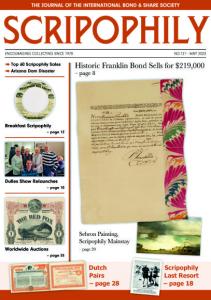 $214,000 paid at Christies for one of a series of rare Franklin-signed and designed bonds securing French financing for the American Revolution;
$214,000 paid at Christies for one of a series of rare Franklin-signed and designed bonds securing French financing for the American Revolution;
- Report on the January 2022 convention of the National Stock and Bond Show in the Washington DC area;
- Stock and bond replicas printed on decorative objects like glasses, towels, pens and the like;
- The review of the Annual Washington DC show;
- Nineteenth century painting of Niagara Falls on stocks, bonds and paper money;
- The top sixty highest prices obtained by stocks and bonds at auction since 1978;
- Review of stock and bond auctions around the world and much more."
Scripophily (scrip-ah-fil-ly) is the name of the hobby of collecting old stock and bond certificates. Certificate values range from a few dollars to more than $500,000 for the most unique and rare items. Over the years, tens of thousands of scripophily buyers worldwide include casual collectors, corporate archives, business executives, museums and serious collectors. Due to the computer age, more and more stock and bonds are issued electronically which means fewer paper certificates are being issued. As a result, demand for paper certificates is increasing while supply is decreasing.
Scripophily gained recognition as a hobby around 1970. The word scripophily
was coined by combining words from English and Greek. The word scrip
represents an ownership right and the word philos
means to love. Today there are thousands of collectors worldwide in search of scarce, rare, and popular stocks and bonds.
A part of Scripophily is the area of financial history. Over the years there have been millions of companies which needed to raise money for their business. In order to do so, the founders of these companies issued securities. Generally speaking, they either issued an equity security in the form of stock or a debt security in the form of a bond. However, there are many varieties of equity and debt instruments.
Each certificate is a piece of history about a company and its business. Some companies became major successes, while others were acquired and merged with other companies. Some companies and industries were successful until they were replaced by new technologies. The color, paper, signatures, dates, stamps, cancellations, borders, pictures, vignettes, industry, stock broker, name of company, transfer agent, printer, and holder name all add to the uniqueness of the hobby.
The IBSS is the leading international organization for collectors, dealers and auctioneers in this field. Everybody interested in buying, selling and collecting Scripophily should become a member.
Benefits include access to all of the online resources available to members including an online forum where you can contact experts to answer questions about your old stocks and bonds and build relationships with fellow collectors, galleries of rare and beautiful scripophily pieces, and news about the society. To find out more of becoming a member click here https://scripophily.org/membership/join/.
For more information on Scripophily please visit https://scripophily.org, https://www.scripophily.com, https://www.oldcompany.com, https://rmsmythe.com, or call 1-703-787-3552
I wish all numismatic societies would send out press releases as nicely made up as this - I'd publish them all. -Editor
To read the complete press release, see:
Latest Scripophily Journal is Available to Members on International Bond & Share Society (IBSS) Website
(https://www.einpresswire.com/article/636373224/latest-scripophily-journal-is-available-to-members-on-international-bond-share-society-ibss-website)
NNP ADDS CATHOLIC MEDAL SOCIETY NEWSLETTER
The latest addition to the Newman Numismatic Portal is the Catholic Commemorative Medal Society Newsletter. Project Coordinator Len Augsburger provided the following report. -Editor
Newman Portal adds Catholic Commemorative Medal Society Newsletter
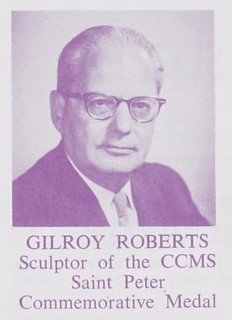 Loaned by Ken Berger, Newman Portal recently scanned a 7-year run (1967-1973) of the Catholic Commemorative Medal Society Newsletter. The precise organization of the Society is not clear; it may have been affiliated with the Franklin Mint. In any case, the first issue of the newsletter noted 1,800 charter members, who received series medals as a membership benefit.
Loaned by Ken Berger, Newman Portal recently scanned a 7-year run (1967-1973) of the Catholic Commemorative Medal Society Newsletter. The precise organization of the Society is not clear; it may have been affiliated with the Franklin Mint. In any case, the first issue of the newsletter noted 1,800 charter members, who received series medals as a membership benefit.
The strength of the newsletter is the engraver biographies that appear throughout the series. The first issue includes a piece on Gilroy Roberts and includes a list of his principal works.
In addition to the newsletters, Ken Berger also forwarded correspondence with Society member Melvin Roland, which includes a prospectus for forthcoming medals, a membership certificate, and other marketing material.
Image: Gilroy Roberts, from the April 1967 Catholic Commemorative Medal Society Newsletter
Link to Catholic Commemorative Medal Society membership correspondence on Newman Portal:
https://nnp.wustl.edu/library/book/627172
Link to Catholic Commemorative Medal Society Newsletter on Newman Portal:
https://nnp.wustl.edu/library/publisherdetail/549933
VIDEO: OHIO RARE COIN FUND SCANDAL
The David Lisot Video Library on the Newman Numismatic Portal can be found at:
https://nnp.wustl.edu/library/multimediadetail/522852
We highlight one of his videos each week in The E-Sylum. Here's one from 2007 about Tom Noe and the Ohio Rare Coin Fund scandal. -Editor
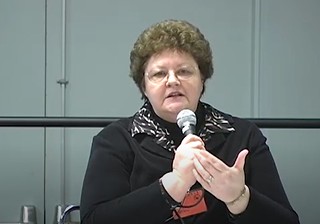 "Coin World" editor Beth Deisher is one of the best- informed observers of the U.S. coin market. This time she turns her attention to the headline-grabbing Ohio Coin Fund Scandal. Who was involved? What happened to the $50+ million investment? How did the liquidation of these coins impact the market? Get the answers in Beth Deisher's fact-filled program. This lecture only presentation includes:
"Coin World" editor Beth Deisher is one of the best- informed observers of the U.S. coin market. This time she turns her attention to the headline-grabbing Ohio Coin Fund Scandal. Who was involved? What happened to the $50+ million investment? How did the liquidation of these coins impact the market? Get the answers in Beth Deisher's fact-filled program. This lecture only presentation includes:
- how Beth was called by Tom Noe and informed about a breaking news story in the Toledo Blade newspaper about Tom and his business
- Noe's political background with the state of Ohio
- difficulty of getting information about the rare coin fund from the government
- the confiscation of Noe's records and files by Federal officials from his coin shop
- details of the agreement that created of the Ohio Rare Coin Fund
- companies and coin dealers involved
- how during the trial it was revealed that records had been falsified, phony invoices created, and inventories fabricated
- Noe's conviction of 25 felonies and 4 misdemeanors that lead to his sentencing to 18 years in prison
- comparison of the performance of the other investment funds for the state of Ohio
- that the story is still unfolding
Speaker(s): Beth Deisher.
To watch the complete video, see:
https://nnp.wustl.edu/library/book/560271
NOTES FROM E-SYLUM READERS: JUNE 4, 2023
A Similar Design to the Great Americans Medal
Wayne Pearson writes:
"I thought that Yo-Yo Ma medal looked familiar."
Interesting similarity, although an eagle is an eagle and there are only so many ways to pose an image of one. The Great Americans medal was launched in 2016; it was designed and sculpted by Welsh artist, engraver and graphic designer Michael Guilfoyle. The design Wayne found was published by the U.S. Mint in 2016 as part of the review process for 2018-2020 Proof American Platinum Eagle designs. Artist names are not revealed during the review process. I don't believe this design was chosen, but I could be wrong. Does anyone know who created it? -Editor
The platinum coin image came from this article:
2018-2020 Proof American Platinum Eagle Candidate Designs Unveiled (Updated)
(https://www.coinnews.net/2016/09/15/2018-2020-proof-american-platinum-eagle-candidate-designs/)
To read the earlier E-Sylum article, see:
GREAT AMERICANS MEDAL AWARDED TO YO-YO MA
(https://www.coinbooks.org/v26/esylum_v26n22a29.html)
Eckberg on Image Fading
Bill Eckberg writes:
"My computer has images in several formats that date back to 2002. Earlier stuff was lost in a major disk failure. Most of the images are in JPEG, TIFF or PSD format, and I have not seen any evidence of fading of any of the images that I have checked. The images on my computer from decades ago have been copied to several different hard drives over the years, but never by opening and saving, which DOES result in image degradation, particularly of JPEG files.
If some people are claiming that digital files can fade, I think it is up to them to provide both evidence and a mechanism. All digital files are represented by a long series of numbers and letters. There is nothing that resembles the original image until it is decoded by software. I can understand that digital files/images can get corrupted and no longer be readable, but I cannot imagine a way that they could fade
or change absent repeated opening and saving. Leaving digital media in a hot car or in direct sunlight for a long time might well corrupt and/or destroy the disk, but I can't imagine that it would change any image file.
Digital files can become unreadable if they were created by software that is not compatible with current computer/software technologies.
This relates to Huntoon's three perspectives:
1. Fading of digital images is real. I say PROVE IT!
2. Fading is dependent on …how long the image has been stored. Old images may well not be compatible with newer computer/software combinations. Incompatibility is NOT the same as fading.
3. Modern computers can copy stored images…However, what gets copied and checked is what remains of the original in storage at the moment it is copied. That is, of course, obvious, but the implication in the perspective is that the digital files change over time. Again, I say PROVE IT!
As to the BEP scan looking washed out, is there any evidence it didn't look like that when it was first created and saved? A lot of images posted on the web are of less than excellent quality."
So far no readers have reported seeing fading in old digital files. We're going in circles on the commentary, but I would welcome further review of Peter's problem. These images were scanned and stored by the Smithsonian, so perhaps their archivists can investigate. As a government agency, they in turn could reach out to the National Institute of Standards and Technology (NIST). -Editor
To read the earlier E-Sylum article, see:
MORE ON THE FADING OF DIGITAL IMAGES
(https://www.coinbooks.org/v26/esylum_v26n22a12.html)
Harriet Tubman and Bernie Sanders Overstamps
Bob Van Arsdell writes:
"I just found a Harriet Tubman overstamp on a twenty. Reminds me of the Bernie Sanders overstamp on the one dollar bills"
I never saw the Bernie one! And I don't think anyone has reported this particular Tubman stamp, either. This one's pretty crude. -Editor
To read the earlier E-Sylum articles, see:
CHURCH STAMPING ALL $20 BILLS WITH TUBMAN FACE
(https://www.coinbooks.org/v22/esylum_v22n23a37.html)
EXHIBIT: DEFACED! MONEY, CONFLICT, PROTEST
(https://www.coinbooks.org/v25/esylum_v25n41a12.html)
Query: The Government Stock Bank of Ann Arbor, MI
Lev Linkner writes:
"I live in Ann Arbor and have notes from other obsolete banks here. I recently bought this Government Stock Bond of Ann Arbor. From 1851. I can't find any info on Google about this bank. I wonder if any of our readers can help me?"
Fuggetabout Google - try the Newman Numismatic Portal. There are dozens of references to the bank. Some are auction listings for the bank's notes from Heritage and others, but there are passages regarding the vignettes on their notes (Zachary Taylor, a pair of quail), an "Unauthorized note from an unfinished plate stolen from the engravers", and "large masses of the bills of the Government Stock Bank lying about some in a trunk". The Bankers Magazine in 1852 reported that "a heavy run" on the bank had taken place.
Here's one note image from NNP. -Editor
S.F. MINT SUPERINTENDENT STEVENS PHOTO SOUGHT
Can anyone help researchers Rich Kelly and Nancy Oliver locate a photo of Robert Julius Stevens, Superintendent of the 1st San Francisco Mint? -Editor
Nancy and I have been searching, for several years now, for an image (photo or drawing) of a Mr. Robert Julius Stevens (who also went by Major, and sometimes Colonel R. J. Stevens). We have enough material to write a book about him, but lack the image. He was born in Rhode Island on Feb 18, 1824 and died on Christmas Day, 1889 in Seattle. We are perplexed on finding one since he held several important Federal positions, and have searched the internet, libraries, mint records, newspapers of the time, etc. to no avail. The following were his positions.
- In 1844 he was U. S. Consulate to Spain at 20 years of age.
- 1849 - manager of shipping company in San Francisco.
- 1853 - married the daughter of famous Colonel Edward D. Baker.
- 1861 - 1863 - Superintendent of 1st San Francisco Mint.
- 1864 - 1865 - Paymaster of the Union Army during the Civil War, and held the rank of Major. Resigned May of 1865.
- 1865 - appointed Secretary to the Committee on Appropriations in the House of Representatives in Washington, D. C. , and held that position for some 20 years.
-
 1871, & 1872 appointed Assay Commissioner for the yearly Assay Commission test of U. S. Coinage.
1871, & 1872 appointed Assay Commissioner for the yearly Assay Commission test of U. S. Coinage.
- 1873 - sent by Treasury Department to investigate, as a Special Commissioner, Indian affairs on the Pacific Coast.
- 1873 - while still holding the Washington D. C. secretary position he was sent to investigate the west coast mints and assay offices, and he called himself, "Superintendent of Repairs", and sometimes a "Special Agent".
- 1884 - appointed U. S. Counsel to Canada and lived in Seattle, WA.
- 1889 - died at daughters' family home on Christmas Day while adorning the Christmas tree.
STACK'S BOWERS OPENS BOSTON LOCATION
Stack's Bowers recently opened a new location in Boston. Here's the announcement. -Editor
A wonderful time was had by all who attended our May 11th grand opening event in the new Boston Gallery. The local crew of Store Manager Stanley Chu, Head Numismatist Kevin Vinton, Chris Bulfinch and Asher Zelson were joined by Brian Kendrella, Christine Karstedt, and Mark Schimel to greet dozens of guests throughout the day.
The ribbon cutting ceremony was hosted by Stan. Additional welcoming comments were provided by Abigail Furey, Senior Neighborhood Business Manager from the Boston Mayor's office and Jim Glickman, Vice President of the C4 organization prior to Brian and Abigail cutting the ribbon.
The gallery is located at 84 State Street facing onto Merchant's Row, a stone's throw from Faneuil Hall and in the heart of a historically important and very numismatic city. Whether you live in New England or are just visiting the area, please add the new Stack's Bowers Galleries Boston location to your must-see list!
The Colonial Coin Collectors Club (C4) submitted this further report on the event. Great occasion! Thanks. -Editor
C4 Participates in Stack's Bowers Grand Opening of Its Boston Store
The Colonial Coin Collectors Club (C4) participated in Stacks-Bowers Galleries' gala grand opening of its new Boston Store on May 11, 2023. Stack's Bowers' recently-opened store is a stone's throw from Faneuil Hall and the historic Quincy Market at 84 State Street in downtown Boston. Several C4 members attended the celebration, and a good time was had by all. C4 National Vice-President Jim Glickman was one of the speakers at the ribbon-cutting ceremony, congratulating Stack's Bowers on its new presence in Boston, as well as recognizing long-time colonial friend and scholar Kevin Vinton, who is head numismatist at the store, and Stack's Executive Vice-President Chris Karstedt, whom C4 recognized last year with an Honorary Life Membership.
If you are in the Boston area, this new store is a worthy numismatic destination. Walk in are welcome or you can call ahead 617.843-8343. It is refreshing to see a new coin shop open for business.
For more information on the Colonial Coin Collectors Club, see:
https://colonialcoins.org/
To read the complete article, see:
AN EXCITING GRAND OPENING FOR OUR BOSTON GALLERY
(https://stacksbowers.com/an-exciting-grand-opening-for-our-boston-gallery/)
VOCABULARY TERMS: MULE, MULING
Here's another entry from Dick Johnson's Encyclopedia of Coin and Medal Terminology. -Editor
Mule, Muling. An obverse die mated with a reverse not originally intended. Also called hybrid. Muling takes place usually where a number of similar items are made at the same place and time. Obviously the diameters of both dies must be the same, and both dies suitable for the same press. Coins, medals and tokens have all been muled, some by accident (where the wrong die was inadvertently used). More often, however, it is done by later intent. In some instances a stock die, say the obverse, is used and a custom reverse die is made to mate with this obverse. (Two dies with original intent to be used together are called mated dies).
The reasons for muling are several: (1) to create a new variety for collector demand, (2) a new variety for sale to public, (3) to lower cost by using a stock die instead of preparing a new die, and (4) by capricious action or accident.
In the history of most mints and medal makers, examples of mules and muling are legion. Private mints are more apt to do muling than national mints, where more constraints are in force on their activity. Muling was rampant in England in the 1790s for halfpenny tokens produced by private mints; likewise muling was prevalent in the United States in the mid 19th century particularly for Civil War tokens and storecards. The medals of engravers of this period, John Adams Bolen and Joseph H. Merriam in particular, were widely muled.
Cataloging mules. Numismatists usually need to examine a large number of specimens, or to have intimate knowledge of a series to recognize a mule. By studying the die varieties and die wear the astute cataloger can gain insight into the sequence of use of dies with different mates. Then it will be the cataloger's duty to chart the relationships between the dies. The chart would identify pieces which are die-linked. In fact such a chart is called a die-link chart, or simply a die chart.
A small number of die-linked specimens would form a simple chart. Illustrated here is an example of a chart that is quite complex as numerous obverse and reverse dies are mated more indiscriminately. When photographs are used to illustrate mated die specimens and mule specimens, it is not necessary to obtain new photos of the same design again and again. A composite may be used of an existing photo of that variety with another existing photo to indicate the mule example.
Reference:
NE42 {1992} Doty, p 222.
To read the complete entry on the Newman Numismatic Portal, see:
Mule, Muling
(https://nnp.wustl.edu/library/dictionarydetail/516366)
CATHERINE ELIAS BULLOWA-MOORE (1919-2017)
E-Sylum Feature Writer and American Numismatic Biographies author Pete Smith submitted this article on the first woman member of the Professional Numismatists Guild. Thanks! -Editor
This week I asked myself a question, who was the first American woman coin dealer? I do not know the answer so I asked another question. Who was the first woman member of the Professional Numismatists Guild (PNG)? That one I could answer.
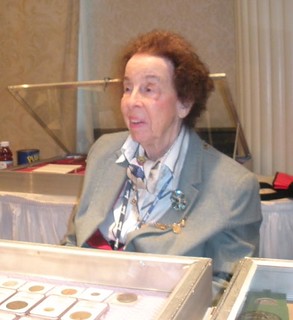 She was born as Catherine Elias in Larchmont, New York, on July 21, 1919. Her parents were bank president Henry and Edna Elias. She attended Connecticut College and graduated in 1941 with a degree in zoology. She later credited her education for her ability to grade coins.
She was born as Catherine Elias in Larchmont, New York, on July 21, 1919. Her parents were bank president Henry and Edna Elias. She attended Connecticut College and graduated in 1941 with a degree in zoology. She later credited her education for her ability to grade coins. That's how I knew how to grade coins, from looking at things through a microscope and a magnifying glass.
Out of college she taught physiology at the Long Island College of Medicine and later at Cornell Medical School.
After Army service during World War II, David Marks Bullowa (1912-1953) bought the coin business of Ira Reed in 1946. David met Catherine Elias at the home of Hans M. F. Schulman in 1951 and he hired her to work in the store. They were married on May 3, 1952. Less than two years later, David died of Hodgkin Disease on September 12, 1953. Catherine took over the business to become a full-time woman coin dealer.
Shortly after she married David, she applied for associate membership in the ANA and was given number 21166. In September of 1958, she converted to life membership LM 355. In 2006 she was inducted into the ANA Numismatic Hall of Fame. (The only woman dealer in the HOF)
Catherine served on the executive committee of the International Association of Professional Numismatists (IAPN) from 1953 to 1971 and then as vice president 1972 to 1979. She was one of the founding members of the Professional Numismatists Guild and issued member number 003 on January 1, 1955. She served as their membership chairman for six years.
She married Earl E. Moore (1914-2001) on June 27, 1959. Clearing out the Bullowa business, she shipped 3000 pounds of coins to Dan Brown in Denver. She also donated 21,531 world coins, medals, and paper currencies to the Smithsonian Institution. The donation was noted for 504 early German and Italian silver and copper coins and 62 Goetz medals.
She worked briefly for Lester Merkin and continued to conduct business at coin shows.
On October 27, 1961, she opened Coinhunter in Philadelphia. The firm conducted auctions from 1974 to 2007. Coinhunter was located in Room 1006 at 1616 Walnut Street in Philadelphia, an Art Deco historic landmark.
On June 5, 1964, three gunmen came into the office on the twelfth floor, tied up the staff and raided the safe for about $120,000 in rare coins. Suspects were apprehended and charged.
In 1965, she served on the United States Assay Commission.
Still at 1616 Walnut Street, in 1984 she moved up into more space and Suite 2112. Her business expanded to include documents and autographs which were the special interest of Earl Moore.
In 1997 she was honored by the PNG with their first Lifetime Achievement Award. She was inducted into the PCGS Coin Dealer Hall of fame in 2020.
Catherine died at home on May 15, 2017, and is buried with Earl Moore at Arlington Cemetery in Drexel Hill, Pennsylvania. She had no children.
This brings me back to my original question with several variations. 1. Who was the first American woman coin dealer?
2. Who was the first woman coin dealer who did not follow her husband in the business?
3. Who was the first woman to have a bourse table at an ANA convention?
4. Who was the first woman to conduct a numismatic auction?
Do any E-Sylum readers have the answers to these questions or similar questions?
All great questions! While there are prominent female collectors from the past (such as Sarah Banks and Emery May Norweb) and female dealers of today (such as Ingrid O'Neil and Shanna Schmidt), I'm not familiar with many women dealers of earlier eras, but I'm sure there must be a number of them in the U.S. and around the world. I can only think of one pre-WWII U.S. woman in the coin business. -Editor
To read the earlier E-Sylum article, see:
CATHERINE BULLOWA-MOORE (1919-2017)
(https://www.coinbooks.org/v20/esylum_v20n21a09.html)
RICHARD LOBEL INTERVIEW PART FIVE
Greg Bennick's latest interview for the Newman Numismatic Portal is with London dealer Richard Lobel. Here's the fifth part, where Richard talks about coin investing, the many coins he's had struck over the years, traveling, and the dealers he has known. -Editor
Greg Bennick: Amazing. So, what you don't need to do is you don't need to take investor money and compromise your ideals is basically what you're saying.
 Richard Lobel: No. Because if I take the money -- if I sell you coins for £1,000 pounds as a
collector, and you go and sell them back a few years later, and maybe you get £700 pounds. All
right. But you still enjoyed them. That's fine. I haven't promised you anything. You may get
£1,200 pounds, but more likely you're going to get £700 pounds. Let's be honest about that.
Because if you want to start talking about Royal Mint and US Mint material, right….
We deal in Royal Mint material, and we're probably one of the largest dealers in the secondary
market. When you, as a wholesaler, are tired of what you bought from the mint and got screwed
royally, because today for a crown, a £5 pound piece, 38 millimeters struck in sterling silver, not
pure silver, they now charge £95 pounds for that. I mean, it's an outrageous price. It is just, you
know. So, I'll wait until I can buy them for £30 pounds and I can sell them for £50 pounds. And
that's why the Mint and I have a love-hate relationship because they know I cut their prices.
Richard Lobel: No. Because if I take the money -- if I sell you coins for £1,000 pounds as a
collector, and you go and sell them back a few years later, and maybe you get £700 pounds. All
right. But you still enjoyed them. That's fine. I haven't promised you anything. You may get
£1,200 pounds, but more likely you're going to get £700 pounds. Let's be honest about that.
Because if you want to start talking about Royal Mint and US Mint material, right….
We deal in Royal Mint material, and we're probably one of the largest dealers in the secondary
market. When you, as a wholesaler, are tired of what you bought from the mint and got screwed
royally, because today for a crown, a £5 pound piece, 38 millimeters struck in sterling silver, not
pure silver, they now charge £95 pounds for that. I mean, it's an outrageous price. It is just, you
know. So, I'll wait until I can buy them for £30 pounds and I can sell them for £50 pounds. And
that's why the Mint and I have a love-hate relationship because they know I cut their prices.
Greg Bennick: Yeah. I was going to ask you about this because in the United States, one of the, and there's certainly a few measurable and numberable elements in the coin market, which have completely sapped collector dollars away over the years, in my opinion, is the Mint because they offer a consistent thread of products that the second they leave the proverbial lot, they lose value.
Richard Lobel: Oh, they lose at least half. At least half.
Greg Bennick: Right.
Richard Lobel: We have, at the moment, a probate lot in with eight huge crates of coins we buy, luckily the man is dead. I don't mean luckily, but he -- there's one crate of gold, which is better, but it's seven crates of silver coin, and I'm telling you he's going to get a third of what he paid. That's what it brings.
Greg Bennick: I see this all the time in the United States where people will buy Mint product after Mint product, which are sold as numismatic delicacies and they're sold with the hint, it's a subtlety, that people are buying investment coins. And they're simply not. And I think the levels of disappointment are so immense ultimately. And you're saying that the Royal Mint is similar. I don't want to condemn…
Richard Lobel: You know, it's worse than that. Now they've bought 25% of sovereign rarities and they're selling coins, numismatic coins, at outrageous prices. I mean, they are selling -- We just found in one of the safes, we just found 150, 1982 proof sovereigns. It turned out in -- four years ago I bought 400 of them. We must have sold 250. We found 150 of them. We're going to sell them for £495 pounds each. The Royal Mint charges £720 pounds each for them. And the public will buy from them because they are the Royal Mint and therefore the price is right. It's not right. We sell an Indian coin, I bought a bunch at auction, came up, George VI. It's quite an interesting piece, BU, and I bought them for £2 pounds each. And I thought they're really worth -- I charge £14.95. I thought that's the right price because it's George VI, and it is a scarce two year type. And then I see them on the Royal Mint website at £40 pounds each. Now, I mean, I think I'm expensive at £14.95, but I'm not outrageous. And also, what we've done as a deal. One of the authors on that book on British Indian coins. We bought Spink out of all the ones they had, so they knocked them out. And so, we now combine the coin with the book to try and get people interested and let them collect something else. But I think that the £40 pounds that the Royal Mint charge for that coin is outrageous.
Greg Bennick: You know, it's odd. Right? Because it's not like the Mint here in the United States is buying back these products. They don't do a market in these products. They just simply sell and continue to sell and push out into the world all of these products. And it just -- there there is no market for them. At least it doesn't seem to me.
Richard Lobel: If you call the Royal Mint, they'll recommend Coincraft, believe it or not. I mean, that's the most insane thing I've ever seen. The only -- there's two marketing companies in London. Harrington and Byrne, and Hatton's of London. And somebody bought a lot of gold coins from these people. They sell mostly gold. And they sold it through Steve Fenton's auction, Knightsbridge Coins. And he actually put there the price that the people had paid. And on average, they brought 30% of what they paid. Gold. Gold we're talking about.
Greg Bennick: Wow.
Richard Lobel: You know, I was looking through Krause's Unusual World Coins the other day
and I've got 165 listings there of things I've struck. There's more, but they're not all listed with
my name because they don't know I struck them. You know, I've done a lot of things over the
years. But I've never charged what I think was an outrageous price for them.
The first coin I ever struck was in 1965, it was the Cuban souvenir peso. I did it with Richard
Margolis and Paul Weinstein. And we sold it in a case, silver, for $12.50 cents retail. They're
now slabbing them, bringing $800. I mean, this is crazy. I mean, I've got a friend of mine who
collects them in New York and I ask him, Why?
I struck them! I know they're not rare!
Greg Bennick: Well, tell me about striking coins. I actually was unaware that you struck coins at any point. So, tell me about the process of striking coins and what did you strike and how did you decide what to create for the numismatic community?
Richard Lobel: Well, the biggest thing I'm known for is Edward VIII. Because I've struck coins for 24 different countries for Edward VIII. And this was because Geoffrey Hearn, the gentleman I mentioned before, did the original Edward VIII piece, the series of five, well six because the Great Britain was done twice. And in those days, it was all under the table. He used to sell them to Hans MF Schulman in New York, and Foxy Steinberg. And in those days, in this country, the Mint would almost have you arrested for dealing in them. Because they were Edward VIII. At one point, if you cut a coin out, they'd have you arrested, defacing the -- But anyway, so the first one I got involved was with a Cuban souvenir peso, 1965. And the reason was I was at a show, and I think it was at Pittsburgh. I'm not sure. Anyway, Richard hired Paul to drive his coins because Richard had - I don't know if you knew Richard Margolis…
Greg Bennick: No.
Richard Lobel: He was dealing -- he was the one start that started the New York show, the one that comes in -- But he was pedantic to the nth degree and wooden cabinets, all his coins were in a cabinets, which in America was -- Richard turned out that his family owned one and a half miles on either side of the main Jersey road. So, they were very wealthy. But he and Paul had arranged to do this Cuban souvenir but because they were fighting because Paul had an…it was raining and he had an accident, and he turned the car over, and all Richard was worried about where are my coins they are all over the place. So, I got involved in that. And I was young, it was great. We had them struck by Louie of Fulton Street. These big, huge, guys with hairy arms, singlets, upstairs…but they did a beautiful job. And we did all right until the US government stepped in and thought we were counterfeiting a fantasy. I mean, this is….and we sold as many as we thought we could sell, and we decided we weren't going to fight the US government. Which was probably a good idea.
Greg Bennick: Yeah. Fair enough.
Richard Lobel: We didn't realize they were going to be so terrific afterwards. And then it wasn't till I moved to this country that I had things struck. I used Tower Mint at one point, Raphael Maklouf, but he was a problem. But I struck a pair of Coronation, sorry, a pair of investiture medallions, 1983 for the Prince Charles. When Prince Charles became Prince of Wales, I struck a pair of medallions for that. And then it just went on. I just decided something looked interesting. Charles and Diana got married. Terrific. Now it's unsalable because you got to countermark Diana with Camilla. But all right. But at least the King is happy and God bless him and wonderful. I think that's terrific. You know, and I just did things I wanted to do. And then there's five, six pieces must be 30 years ago, 35 years ago, Christie's had for sale some plasters from Humphrey Paget. I bought them, and I left them for years. And then Raphael ran short of money at one point and wasn't willing to do things he wouldn't normally do. And I had him make dies for them and I struck them. And one of them was turned out to be the George VI New Zealand dollar. Am I boring you?
Greg Bennick: Not at all. Are you kidding me? This is fantastic.
Richard Lobel: In other words, the Prince Philip pattern here and then there's Bolivia. Anyway, I struck them so many in silver, and I sold…like, for instance, I sold the entire George VI New Zealand vintage to my late friend Bob Roberts in Australia, Sydney, Emma and Bob Roberts. He was fantastic. He was a dynamite guy. I mean, he was absolutely wonderful. You know, my wife and I, our hobby is traveling, and we have visited 115 different countries.
Greg Bennick: Wow!
Richard Lobel: And when I did a -- I used to do a quarter of a million kilometers a year flying around the world on coin business. And I made sure that I got to know the people and I got to know the dealers. I mean, like in Japan, it was Masamichi Oka from Taisei Stamp and Coin. And some people called him Mikie, but he was a gentleman and you could not call them anything but Masamichi. You had to call him Oka San. And it was wonderful. And I would go to Japan to see him or I'd go to you know, I'd go all over. But I got to know the people and I got to know Jacques Schulman in Amsterdam. I got to know Albert Del Monte in Brussels. But knew them very well. Han Schulman, when he had to leave New York, shall we say, and move to Spain….but when he would come to London, we'd go for dinner, and we'd enjoy. And Hans actually, I have to admit, he saved my life one time.
Greg Bennick: Really?
Richard Lobel: I bought at an Glendening's auction….you know that Hans was the official agent for King Farouk of Egypt.
Greg Bennick: That I didn't know. I didn't know that.
Richard Lobel: Right. And he was big. He was big. And everyone dealt with him through -- King Farouk only dealt with him. And he bought -- Well, he bought the dies years later. He bought the dies that they used to strike some of the coins from King Farouk, but that's another story.
Greg Bennick: Sure.
Richard Lobel: But I bought these German pattern five marks in gold. Because I figured it's got to be King Farouk. I knew -- Anyway. And I sold them to a client in Bermuda for $25,000. Which was a lot of money at the time. There was five or six of them. And I told him they were King Farouk's. And don't you think he went out and bought a King Farouk catalog, and they weren't there. Well, let's say that being young, foolish, the $25,000 had long fled the office. So, I said, what can I do? You know? And I wrote to Hans who was living in Alicante at the time. And I explained -- I explained what had happened. You know, there's no sense lying. And I said could they have been sold before the collection? You know, the auction, the big auction.
Greg Bennick: Sure.
Richard Lobel: And I enclosed a check for $200. You know, it wasn't much, and the letter came back from Hans. He said, yes. I remember selling those. But give me full details so I can make sure I'm correct. He gave me a letter. And the man had to eat them. And it's not nice, but you do what you have to do when you're younger.
Greg Bennick: Yeah. Well what I love about all of this, the story of you striking coins, and then just all the different things you struck and the approaches that you took and all of this leading up to the Farouk story. What I love about all this is that you are this renegade spirit all throughout. From the moment you landed in London, you are a renegade spirit and just doing things on your own terms.
Richard Lobel: Oh, absolutely. Yeah. I hope I've always been myself.
Greg Bennick: Obviously, you certainly have been. And one thing I'm curious about in terms of being yourself, I know that you're a multiple Guinness World Record holder. And I was wondering if you could tell me -- you mentioned before that you…
Richard Lobel: When the Guinness Book of World Record used to do coins and banknotes, I was listed 14 times.
Greg Bennick: And now, you mentioned the Indiana Jones story and the largest number of banknotes and whatnot. What were the other things that you were listed for back in the day.
Richard Lobel: For the 1954 penny, that was an interesting thing because the statute of limitation's up, so that's okay. At one point, you could not take more than £50 pounds a year out of this country. But as a dealer, you could get a license from….I had a bank of England license. And Paramount in the States owned a 1954 penny and they wanted $40,000 or $45,000 for it. In fact, I think I bought it for $25,000 and I gave them a check for $40,000, and they gave me a check back for the difference, which was very useful. I was listed for the, let's say the ‘54 penny, the partial Edward VIII set until Larry…Ira Goldberg from Superior bought the entire set.
Greg Bennick: Oh, wow. Okay.
Richard Lobel: That was the only…the partial set was the duplicates of Mrs. R. Henry Norweb.
Greg Bennick: Oh, wow. Okay.
Richard Lobel: And Mrs. Norweb was known to never pay anything except out of interest. So, you only got paid twice a year. But Spink had the partial set, and I bought them with someone. It was a long story. And then they were sold to Educational and they were sold to Bowers and Ruddy then I bought them back. It was -- I've gotten into a few interesting things over the years lets put it that way.
Greg Bennick: Well, you touched on Edward VIII. I wanted to ask you, I know that you're a specialist in Edward VIII memorabilia and in coins and whatnot. Can you talk about that and why Edward VI is important to you and what stands out about him and his reign?
Richard Lobel: Well, the truth is, I was young, I was just reaching puberty and I learned that
man had given up the throne for the woman he loved and I was a romantic. I thought it was the
greatest thing in the world. Now I know he was a bit of a shit, but that's okay. But I collect -- I
for 50 years, collected Edward VIII, and I have two collections. I have ephemeral which starts
with his birth announcement in King George V's handwriting in the newspaper in 1894 when he
was announced. And I bought just recently his daybook from his valet, and it includes the day
that he abdicated and it just says Fini
on it.
Now he got married at a chateau in France, and I bought the entire archives for the chateau
including 63 handwritten letters from the Duchess of Windsor, hundreds of… Now I have the
second finest Edward VIII ephemeral collection in the world. The royal family has the best.
There's no question in the world.
But then I go to medallions. And if you've ever seen Giordano's book on Edward VIII, 80% of
that is my collection. I have the finest collection of Edward VIII medallions in the world.
Greg Bennick: Wow. I need to find this book. Tell me about the book because I want to look it up and I want to add it to my collection.
Richard Lobel: It's Giordano's Views of a Prince I think it's called. It's a big thick book, but 80% of what he's illustrated in there is mine.
Greg Bennick: Fantastic.
Richard Lobel: And he gave me two line intros sort of hidden at the front, a really nice guy. But I got back at him when he had to sell his collection at Spink to pay for the book. There were 225 lots, and I think I bought 190. I sat there in the first lot. I had £300 pounds to bid on it and I got it for £70 pounds. I said, it's going to be a good day.
Greg Bennick: That's amazing. Amazing. So, let's talk just briefly about The Standard Catalog of English and UK Coins. What was it like writing that and what is the most current and up to date edition just so that….
Richard Lobel: Oh, it hasn't been done since 2000. It cost me to get into the book publishing business a quarter of a million pounds. I lost a quarter of a million pounds on it. It is a business I never want to go in again. I have no interest in it. I mean, I would publish a catalog of my Edward VIII collection, but only to sell it. In fact, I've got a museum at least interested in it, but it's six and a half million pounds. So, we're talking a lot of money.
Greg Bennick: Yeah.
Richard Lobel: But I mean, I've got things that….let's say, I've got the entire archives from the chateau in France. I've got hairs from Edward VIII's head when he was one month old, and six months old. I have just -- because I bought his nanny's collection. I bought -- I've just got incredible things.
Greg Bennick: That's fantastic. Amazing. Amazing. Amazing. So, the catalog, though, even without going into the book publishing side of things, the catalog you authored. Right?
Richard Lobel: Right. What happened was I looked at -- at that time it was Seabee's book, now Spink publish it, and they do a much better job. I said, it's not the way people collect. And I tried to do, I believe people will collect will collect a shilling, will collect the half crown, will collect - - And so I tried to put it that way. And I hired two people to actually do the work, three people, I should say. That's how it cost me so much money. Alan Halestorm did the modern, Mark Davidson did the earlier ones, Elaine Caligas did the editing sort of. But yes. No. And I corrected -- there were all sorts -- If you can think of what you should not do to publish a book, I did it. It was -- I mean -- And it got to the point where, let's say, a small dealer, bookshop would order three copies, but they would never pay you, and it wasn't enough money to sue them. And then you had the big people Krause -- they were terrific. Krause distributed in the States. But WH Smith, which is a big chain of well, papers, you know, everything…we once late in delivery for 15 minutes, and they refused the thing because you were 15 minutes late. I mean, and people didn't pay, you know, even WH Smith didn't pay for six months. I mean, it was an interesting thing. And then I decided to accept advertising. And you then try to get the dealers to realize this is the best and it wasn't expensive. They didn't want to spend the money. Dealers in general, they don't want to spend advertising money. They don't want to do what they should be doing.
Greg Bennick: Wow. Well, it's relatable in a way. I played in bands for many years. And years ago, when we would press seven-inch vinyl records, and we were doing our own distribution. And we'd send out, say, 100 copies somewhere. We'd get paid for that 100 copies but then we would send out 20 packages, maybe of five copies each to smaller distributors. And I would say, whatever the proportion was, I don't want to name a percentage, would not pay…
Richard Lobel: 80% I would guess.
Greg Bennick: Am I going to go after somebody for five records for a total of $15 wholesale? I mean…
Richard Lobel: It doesn't pay you.
Greg Bennick: It doesn't. It doesn't. It absolutely doesn't.
Richard Lobel: Yep. The book business is a specialist business and one I don't want to go into ever again. Although we did two years ago, we bought -- Spink sold us a lot of the books -- We bought, I don't know, 12,000 books. We've got a warehouse elsewhere for them. But it's great because we were able to buy a two volume set on medallions of the basically print -- the civil war over here with Charles I. And we were able -- they were sold for £175 pounds as a double volume set with a slip case, really nice. Lots of illustrations. We now sell them for £59 pounds a set, and we give you a free cannonball from the civil war.
Greg Bennick: That's amazing.
Richard Lobel: Because what I -- I have found that -- we try and put something else in there to make it more interesting.
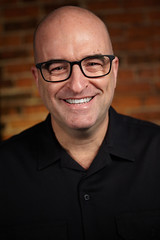 About the Interviewer
About the Interviewer
Greg Bennick (www.gregbennick.com) is a keynote speaker and long time coin collector with a focus on major mint error coins. Have ideas for other interviewees? Contact him anytime on the web or via instagram @minterrors.
To watch the complete video, see:
Richard Lobel of Coincraft Interviewed for the NNP by Greg Bennick
(https://nnp.wustl.edu/library/book/626832)
To read the complete transcript, see:
Richard Lobel of Coincraft Interviewed for the NNP by Greg Bennick (Transcript)
(https://nnp.wustl.edu/library/book/626831)
To read the earlier E-Sylum articles, see:
RICHARD LOBEL INTERVIEW, PART ONE
(https://www.coinbooks.org/v26/esylum_v26n21a08.html)
RICHARD LOBEL INTERVIEW PART TWO
(https://www.coinbooks.org/v26/esylum_v26n21a09.html)
RICHARD LOBEL INTERVIEW PART THREE
(https://www.coinbooks.org/v26/esylum_v26n22a19.html)
RICHARD LOBEL INTERVIEW PART FOUR
(https://www.coinbooks.org/v26/esylum_v26n22a20.html)
NUMISMAGRAM MEDAL SELECTIONS: JUNE 4, 2023
Jeremy Bostwick at Numismagram forwarded these four highlights from his most recent addition of new material. This upload has a particular focus upon award medals and medallic issues related to World War I. For all of this upload's new additions, please visit https://www.numismagram.com/inventory -Editor
102197 | UNITED STATES & NETHERLANDS. Treaty of Commerce silver Medal. Issued 1782 (34mm, 13.90 g, 12h). By J. G. Holtzhey. FAVTISSIMO FOEDERE JVNCTÆ / DIE VII OCTOB MDCCLXXXII (by a most auspicious treaty), Fama (Rumor) seated right upon a cloud, trumpeting and cradling crowned coats-of-arms representing the Dutch Republic and the United States; club and lion skin of Hercules to left // JVSTITIAM ET NON TEMNERE DIVOS (learn justice and not to despise the gods), garlanded pyramidal statue with shield and crossed fasces, which a flying Mercury crowns to upper right; to lower right, basket of fruit set upon anchor; in background, French cock standing right, head left, crowing over the treaty; in two lines in exergue, S. P. Q. AMST. / SACRVM. Edge: Plain. Betts 605. PCGS SP-62. Attractively toned, with some hues of olive-argent and cobalt, along with a great deal of brilliance. Undoubtedly one of the finest examples of the type extant, and extremely rare as such. Far superior to the specimens in the Ford and LaRiviere collections, and much more difficult to find than the similar larger module of the design. $1,985.
John Adams, the future first Vice President of the United States and second President, served as America's first ambassador to the Dutch Republic at a location in The Hague that became one of America's first embassies in the world. In 1782, he signed the Treaty of Amity and Commerce, which strengthened economic ties between the two nations, as well as served as a way to cement America's status as a nascent yet burgeoning nation.
To read the complete lot description, see:
102197 | UNITED STATES & NETHERLANDS. Treaty of Commerce silver Medal.
(https://www.numismagram.com/product-page/102197)
102414 | UNITED STATES. Philadelphia/Centennial Exposition bronze award Medal. Issued 1877 (76mm, 260.46 g, 12h). By H. Mitchell. Victory seated left on bricks, resting hand upon shield and extending wreath over implements of science, commerce, and learning; in border, thirty-eight stars and four medallions containing representations of the four quarters of the globe // INTERNATIONAL EXHIBITION / PHILADELPHIA, MDCCCLXXVI, AWARDED BY / UNITED STATES / CENTENNIAL / COMMISSION in four lines within wreath. Edge: Plain. Julian AM-10; Harkness Nat-300. Gem Mint State. Deep red-brown surfaces, with intense luster in the fields; no rim bruises or scuffs that commonly plague the type. A charming and impressive issue, with a mintage of 12,000 pieces, though few survived this attractive and problem free. $325.
The Centennial International Exposition of 1876 had the distinction of being the first such expo to take place within the United States, all while being held during the nation's 100th anniversary of independence. Nearly 10 million visitors viewed such novel inventions as the typewriter, the sewing machine, and the telephone.
To read the complete lot description, see:
102414 | UNITED STATES. Philadelphia/Centennial Exposition bronze award Medal.
(https://www.numismagram.com/product-page/102414)
102403 | UNITED STATES & SWITZERLAND. Carnegie Hero Fund (Switzerland) bronze award Medal. Instituted 1911. Presented by the Swiss chapter (70mm, 186.78 g, 12h). By H. Frei. ANDREAS CARNEGIE DIE XXII MART MDCCCCXII, female figure advancing right, holding overturned cornucopia // VIRTVTI / DE VITIS HVMANIS / SERVANDIS / OPTIME MERITAE, male rescuing female from drowning in the ocean. Edge: Plain. Gem Mint State. Even brown surfaces, with a delightful matte nature. Includes original case of issue. $395.
The Scottish-American steel magnate and philanthropist, Andrew Carnegie, created the Carnegie Hero Fund in 1904 to honor and recognize citizens who performed acts of heroism and bravery in the United States. A few years later, he created a similar fund for other countries in Europe to serve a similar purpose. This piece, designed by Hans Frei, displays the elegant and soft beauty more commonly encountered in his numerous Swiss shooting medals.
To read the complete lot description, see:
102403 | UNITED STATES & SWITZERLAND. Swiss Carnegie Hero Fund bronze Medal.
(https://www.numismagram.com/product-page/102403)
102419 | UNITED STATES & SWITZERLAND. Swiss Gratitude to America bronze Medal. Issued 1918 (39mm, 26.72 g, 12h). By H. Frei. Eagle, holding grain ears in talons, flying right over shoreline; above, clouds in the form of the American flag // TO THE PRESIDENT / AND PEOPLE / OF THE VNITED STATES / OF AMERICA / THE GRATITVDE / OF THE SWISS / FAMILIES / 1918 in eight lines; above, Swiss coat-of-arms between bundles of edelweiss. Edge: Plain. SM 215. Gem Mint State. Olive-bronze surfaces, with a great matte nature. $145.
To read the complete lot description, see:
102419 | UNITED STATES & SWITZERLAND. Swiss Gratitude to America bronze Medal.
(https://www.numismagram.com/product-page/102419)
SOVEREIGN RARITIES AUCTION 9 MEDALS
The upcoming Sovereign Rarities sale offers a range of numismatic material including ancient and Byzantine gold coins, Anglo Saxon silver and gold, Newark seige pieces, British gold, and more. It also includes an interesting selection of art medals. Graham Byfield of Sovereign Rarities Ltd mentions some highlights. -Editor
There's a lot of important numismatics out there, and some of it's expensive. On the other hand there are some rare, interesting and undervalued commemorative medals which don't always attract a crowd. Readers might consider looking at the modern art medals in our forthcoming auction. There are medals by Thérèse Dufresne, who's considered important in this area. There are medals by Kauko Rasanen, for example the three-part medal in the banner above, and other artists, which are genuinely sculptural. Some of these modern artists have large commissions in public spaces in their own country.
Some background:
- Thérèse Dufresne (1937-2010), French artist, sculptor and medallist, whose large, heavy art medals comfortably illustrate the intrinsic link between medals and sculpture.
- Kauko Rasanen (1926-2015), was a prominent Finnish sculptor and medallist. He was awarded the Medal of Merit of the Finnish Sculptor Association, which was designed by Rasanen himself, and won the coveted Saltus Award in 1987 from the American Numismatic Society.
- Aimo Johan Kustaa Tukiainen (1917-1996) was a Finnish sculptor who chaired both the Artists' Association of Finland and the Association of Finnish Sculptors. His body of work includes portraits, medals, monumental and small sculptures. His best-known sculpture is the Equestrian statue of Marshal Mannerheim, in Helsinki.
- Erkki Kannostos best-known work is perhaps his Monument to the Red Prisoners, in Fellmans Park.
There's also a run of chunky, tactile (heavy mind you) medals from the national mints of France, Spain and Portugal.
Thank you. Here are some lots that caught my eye. -Editor
Lot 257:
Société Française des Amis de la Médaille, large bronze medal by F.J., undated, c.1950s, female figure by medal press, holding medals portraying the bust of Athena, SFAM, rev. collage of medals depicting the bust of Athena in the art deco style, 80mm. Extremely fine, scarce.
To read the complete lot description, see:
Lot 257: Société Française des Amis de la Médaille large bronze Medal
(https://auctions.sovr.co.uk/index.php?option=com_bidding&view=timed&layout=details&id=755332)
Lot 259:
Boston, high relief bronze medal, 1985, by Thérèse Dufresne (1937-2010), cityscape of Boston, signature lower right, rev. tall ship and doorway, 69mm. Extremely fine, scarce.
Thérèse Dufresne (1937-2010), French artist, sculptor and medallist, whose large, heavy art medals comfortably illustrate the intrinsic link between medals and sculpture.
To read the complete lot description, see:
Lot 259: Boston by Thérèse Dufresne
(https://auctions.sovr.co.uk/index.php?option=com_bidding&view=timed&layout=details&id=755335)
Lot 288:
Exposición Ibero-Americana de Numismática Medallistica de Barcelona, 1958, bronze medal, by FJ, issued by the FNMT, female figure seated left, rev. hands holding hammer and tongs, medal screw press, etc., 75mm; together with Lancashire and Cheshire Numismatic Society, Manchester Museum Exhibition, 1983, base metal medal; 50th anniversary of Krause Publications, 2002, silver or copper-nickel medal; 5th Annual Conference and Exhibition of the Numismatic Society of Calcutta, 1999, copper medal. Extremely fine. (4)
To read the complete lot description, see:
Lot 288: Spain Numismatics bronze Medals (4)
(https://auctions.sovr.co.uk/index.php?option=com_bidding&view=timed&layout=details&id=755333)
Lot 251:
Centenary of L. M. Ericsson, 1876-1976, bronze and silvered bronze, three-part medal, 1975, by Kauko Rasanen (1926-2015), male and female figures representing telecommunications seated vis-à-vis, rev. quasi-janiform image, a male and a female, incuse and in relief, talking and listening; within the outer parts a separate, silvered-bronze ovoid medal with reclining female nude, talking into a phone, and the facing head of a man also talking into a phone, L M ERICSSON 1876-1976, outer parts 70mm. Extremely fine, rare and very high quality.
Telefonaktiebolaget LM Ericsson, commonly known as Ericsson, the Swedish multinational networking and telecommunications company, celebrated its centenary in 1976. Today the company sells infrastructure, software, and services in information and communications technology for telecommunications service providers, and its 150th anniversary will take place in just a few years time.
Kauko Rasanen (1926-2015), was a prominent Finnish sculptor and medallist. He was awarded the Medal of Merit of the Finnish Sculptor Association, which was designed by Rasanen himself, and won the coveted Saltus Award in 1987 from the American Numismatic Society. We could be equally justified in describing a medal such as this, sculpture.
For other medals on the theme of telecommunications see lot 289
To read the complete lot description, see:
Lot 251: Centenary of L. M. Ericsson (1876-1976)
(https://auctions.sovr.co.uk/index.php?option=com_bidding&view=timed&layout=details&id=755324)
Lot 254:
50th Anniversary of Aspo-Yhtymä Oy, 1979, bronze medal by Aino Tukiainen (1917-1996), image including shipping, rail freight, haulage and other elements of the logistic industry, rev. network or pipelines or conduits against a backdrop of storage containers, 78mm (National Museum of Finland SMM442010:25); together with Finland, Reino Lindroos, heavy bronze medal by Erkki Kannosto, 80mm. Extremely fine, both medals scarce. (2)
Aspo-Yhtymä Oy was founded in 1929 and is part of the Aspo Group, which has interests in logistics, environmental technology, and industrial machinery.
Aimo Johan Kustaa Tukiainen (19171996) was a Finnish sculptor who chaired both the Artists' Association of Finland and the Association of Finnish Sculptors. His body of work includes portraits, medals, monumental and small sculptures. His best-known sculpture is the Equestrian statue of Marshal Mannerheim, in Helsinki.
To read the complete lot description, see:
Lot 254: Finland 50th Anniversary of Aspo Yhtymä Oy 1979
(https://auctions.sovr.co.uk/index.php?option=com_bidding&view=timed&layout=details&id=755326)
THE BOOK BAZARRE
KELLY CIVIL WAR SUTLER TOKEN HIGHLIGHTS
In an email to clients on May 22, 2023, Stack's Bowers illustrated highlights of the June 2023 Whitman Expo Auction of the Bill Kelly Collection of Civil War Sutler Tokens. Great history! Some really interesting pieces, especially the colored troops ones. -Editor
- One of the Finest and Most Extensive Collections Ever Offered
- More than 140 different varieties of unusually nice quality
- More than 40 Rarity-9 Tokens
Indiana. 69th Indiana Volunteers. Undated (1861-1865).
Wm. Show. Five Cents. Schenkman IN-69-5B (IN-M5B).
Rarity-9. Brass. Plain edge. AU-55 (NGC).
To read the complete lot description, see:
Indiana. 69th Indiana Volunteers. Undated (1861-1865) Wm. Show. 5 Cents. Schenkman IN-69-5B (IN-M5B), W-IN-340-005b. Rarity-9. Brass. Pl...
(https://auctions.stacksbowers.com/lots/view/3-1377ZT/indiana-69th-indiana-volunteers-undated-1861-1865-wm-show-5-cents-schenkman-in-69-5b-in-m5b-w-in-340-005b-rarity-9-brass-pl)
Maine. 6th Maine Battery. Undated (1861-1865).
C.W. Bangs. 25 cents. Schenkman ME-6-25N (ME-A25N).
Rarity-9. Nickel. Plain edge. AU Details (NGC).
To read the complete lot description, see:
Maine. 6th Maine Battery. Undated (1861-1865) C.W. Bangs. 25 Cents. Schenkman ME-6-25N (ME-A25N), W-LME-100-025J. Rarity-9. Nickel. Plai...
(https://auctions.stacksbowers.com/lots/view/3-13782X/maine-6th-maine-battery-undated-1861-1865-cw-bangs-25-cents-schenkman-me-6-25n-me-a25n-w-lme-100-025j-rarity-9-nickel-plai)
Maryland. 2nd Regiment Maryland Infantry, Potomac Home Brigade.
Undated (1861-1865). C. Gilpin. 25 cents. Schenkman MD-2-25B (MD-A25B).
Rarity-9. Brass. Plain edge. EF-45 (NGC).
To read the complete lot description, see:
Maryland. 2nd Regiment Maryland Infantry, Potomac Home Brigade. Undated (1861-1865) C. Gilpin. 25 Cents. Schenkman MD-2-25B (MD-A25B), W...
(https://auctions.stacksbowers.com/lots/view/3-137838/maryland-2nd-regiment-maryland-infantry-potomac-home-brigade-undated-1861-1865-c-gilpin-25-cents-schenkman-md-2-25b-md-a25b-w)
Missouri. 1st Missouri Artillery. Undated (1861-1865).
J.W. LaForce. Five Cents. Schenkman MO-1-5C (unlisted in the first edition).
Rarity-9. Copper. Plain edge. EF Details (NGC).
To read the complete lot description, see:
Missouri. 1st Missouri Artillery. Undated (1861-1865) J.W. LaForce. 5 Cents. Schenkman MO-1-5C (unlisted in the first edition), W-MO-100...
(https://auctions.stacksbowers.com/lots/view/3-13784L/missouri-1st-missouri-artillery-undated-1861-1865-jw-laforce-5-cents-schenkman-mo-1-5c-unlisted-in-the-first-edition-w-mo-100)
Ohio. 4th Ohio. Undated (1861-1865).
Charles Stevens. Five Cents. Schenkman OH-4b-5B (MD-B5B).
Rarity-9. Brass. Plain edge. MS-61 (NGC).
To read the complete lot description, see:
Ohio. 4th Ohio. Undated (1861-1865) Charles Stevens. 5 Cents. Schenkman OH-4b-5B (MD-B5B), W-OH-220-005b. Rarity-9. Brass. Plain Edge. M...
(https://auctions.stacksbowers.com/lots/view/3-1378BC/ohio-4th-ohio-undated-1861-1865-charles-stevens-5-cents-schenkman-oh-4b-5b-md-b5b-w-oh-220-005b-rarity-9-brass-plain-edge-m)
Lot 1165 Ohio. 62nd Regiment Ohio Volunteer Militia. Undated (1861-1865).
Hosmer & Crowther. One dollar. Schenkman OH-62-100B (OH-AA100B).
Rarity-8. Brass. Plain edge. MS-63 (NGC).
To read the complete lot description, see:
Ohio. 62nd Regiment Ohio Volunteer Militia. Undated (1861-1865) Hosmer & Crowther. One Dollar. Schenkman OH-62-100B (OH-AA100B), W-OH-64...
(https://auctions.stacksbowers.com/lots/view/3-1378H1/ohio-62nd-regiment-ohio-volunteer-militia-undated-1861-1865-hosmer-crowther-one-dollar-schenkman-oh-62-100b-oh-aa100b-w-oh-64)
Pennsylvania. 155th Pennsylvania Volunteers. 1st U.S. Zouaves. Undated (1861-1865).
Samuel Pollock. 10 cents. Schenkman PA-155-10R (PA-L10R).
Rarity-9. Brown Hard Rubber. Plain edge. MS-62 (NGC).
To read the complete lot description, see:
Pennsylvania. 155th Pennsylvania Volunteers/1st U.S. Zouaves. Undated (1861-1865) Samuel Pollock. 10 Cents. Schenkman PA-155-10R (PA-L10...
(https://auctions.stacksbowers.com/lots/view/3-1378UX/pennsylvania-155th-pennsylvania-volunteers1st-us-zouaves-undated-1861-1865-samuel-pollock-10-cents-schenkman-pa-155-10r-pa-l10)
Pennsylvania. 172nd Pennsylvania Regiment S.M. Undated (1861-1865).
John H. Gotshall. 10 cents. Schenkman. PA-172-10WM (PA-M10WM).
Rarity-9. White metal. Plain edge. VF-35 (NGC).
To read the complete lot description, see:
Pennsylvania. 172nd Pennsylvania Regiment S.M. Undated (1861-1865) John H. Gotshall. 10 Cents. Schenkman. PA-172-10WM (PA-M10WM), W-PA-3...
(https://auctions.stacksbowers.com/lots/view/3-1378VF/pennsylvania-172nd-pennsylvania-regiment-sm-undated-1861-1865-john-h-gotshall-10-cents-schenkman-pa-172-10wm-pa-m10wm-w-pa-3)
Pennsylvania. Carlisle Barracks. Undated (1861-1865).
Christian Inhoff. 50 cents. Schenkman US-PA CB-50C (PA-N50C). Rarity-7.
Copper. Plain edge. MS-64 RB (NGC).
To read the complete lot description, see:
Pennsylvania. Carlisle Barracks. Undated (1861-1865) Christian Inhoff. 50 Cents. Schenkman US-PA-CB-50C (PA-N50C), W-PA-360-050a. Rarity...
(https://auctions.stacksbowers.com/lots/view/3-1378WC/pennsylvania-carlisle-barracks-undated-1861-1865-christian-inhoff-50-cents-schenkman-us-pa-cb-50c-pa-n50c-w-pa-360-050a-rarity)
Virginia. 15th Virginia. Undated (1861-1865).
G.G. Sawtell. Five Cents. Schenkman VA-15-5B (VA-M5B).
Rarity-9. Brass. Plain edge. AU Details—Reverse Scratched (NGC).
To read the complete lot description, see:
Virginia. 15th Virginia. Undated (1861-1865) G.G. Sawtell. 5 Cents. Schenkman VA-15-5B (VA-M5B), W-VA-320-005b. Rarity-9. Brass. Plain E...
(https://auctions.stacksbowers.com/lots/view/3-13791E/virginia-15th-virginia-undated-1861-1865-gg-sawtell-5-cents-schenkman-va-15-5b-va-m5b-w-va-320-005b-rarity-9-brass-plain-e)
West Virginia. 11th West Virginia Regiment. Undated (1863-1865).
Bare & Rauch. Five Cents. Schenkman WV-11-5Ba (WV-A5Ba).
Rarity-8. Brass. Plain edge. EF Details (NGC).
To read the complete lot description, see:
West Virginia. 11th West Virginia Regiment. Undated (1863-1865) Bare & Rauch. 5 Cents. Schenkman WV-11-5Ba (WV-A5Ba), W-WV-100-005b. Rar...
(https://auctions.stacksbowers.com/lots/view/3-13791T/west-virginia-11th-west-virginia-regiment-undated-1863-1865-bare-rauch-5-cents-schenkman-wv-11-5ba-wv-a5ba-w-wv-100-005b-rar)
United States. 117th United States Colored Troops. Undated (1861-1865).
C.H. Smith. 50 cents. Schenkman US-117-50B (NL-W50B).
Rarity-9. Brass. Plain edge. AU-50 (NGC).
To read the complete lot description, see:
United States. 117th United States Colored Troops. Undated (1861-1865) C.H. Smith. 50 Cents. Schenkman US-117-50B (NL-W50B), W-CI-140-05...
(https://auctions.stacksbowers.com/lots/view/3-13795L/united-states-117th-united-states-colored-troops-undated-1861-1865-ch-smith-50-cents-schenkman-us-117-50b-nl-w50b-w-ci-140-05)
United States. 119th Regiment United States Colored Infantry. Undated (1861-1865).
J.M. Longwell. 50 cents. Schenkman US-119-50WM (NL-S50-WM).
Rarity-8. White metal. Plain edge. MS-61 (NGC).
To read the complete lot description, see:
United States. 119th Regiment United States Colored Infantry. Undated (1861-1865) J.M. Longwell. 50 Cents. Schenkman US-119-50WM (NL-S50...
(https://auctions.stacksbowers.com/lots/view/3-13796I/united-states-119th-regiment-united-states-colored-infantry-undated-1861-1865-jm-longwell-50-cents-schenkman-us-119-50wm-nl-s50)
KUENKER JUNE 2023 AUCTION 387
Here's the announcement for the first of Künker's four June 2023 sales. -Editor
From Taler to Mark and Beyond
In June, Künker will hold four auction sales. This preview is dedicated to the public auctions 387-388 from 20 to 22 June. Among other things, auction 387 includes Swedish rarities from the Ekström Collection, another part of the Popken Collection with lösers as well as a small series on Mecklenburg. Auction 388 covers German coins from 1800 to 1918.
From 20 to 24 June 2023, Künker will hold their extensive Summer Auction Sales. In this preview, we will exclusively deal with the two public auction sales that take place from 20 to 22 June in Osnabrück. The two eLive Premium Auctions will be presented in a separate preview. Auction 387 starts with Swedish rarities from the Gunnar Ekström Collection, the most important private collection of Swedish coins and medals that has been compiled to date. This is followed by world issues with a focal point on the German States, including numerous high-caliber pieces. Moreover, auction 387 presents another part of the Friedrich Popken Collection with selected lösers and a small series with Mecklenburg issues.
Auction 388 contains German coins from a North German private collection, which were minted between 1800 and 1918 and are of outstanding quality. The offer includes all rarities and, of course, the popular Frederick the Wise issue.
Rarities from the Gunnar Ekström Collection
Gunnar Ekström is a key figure of Swedish numismatics. Over several decades of active collecting, he compiled what is the most important private collection of Swedish coins and medals to date. His wife decided to sell the collection and use the proceeds to set up a foundation, which has had a profound impact on Swedish numismatics ever since. For example, it funds the professorial chair for Numismatics and Monetary History of the University of Stockholm as well as the numismatic research team that revolutionized what we know about Viking-age and other medieval finds of Northern Europe. Leading numismatists such as Britta Malmer, Kenneth Jonsson and Jens Christian Moesgaard were able to pursue their research thanks to the Gunnar Ekström Foundation. The example of this collector clearly demonstrates that a single individual certainly has the power to positively influence the development of the research landscape.
The series of issues from the Gunnar Ekström Collection offered at Künker is from the possession of the Ekström Foundation, which had displayed it in a showcase at the former museum for Economic and Monetary History in Stockholm. Since the museum closed down and there is no space for this showcase in the new location of the Royal Coin Cabinet, the foundation board decided to offer the previously withheld rarities of the collection on the market to increase the foundation's financial means. You can look forward to extremely rare coins and medals, including pieces that the Swedish King Gustav III himself gave as a present to his cousin Peter Frederick Louis, the later Duke of Oldenburg!
No. 12: Sweden / Pomerania. Charles X Gustav, 1654-1660. 2 ducats 1658, Stettin. From the Gunnar Ekström Collection, part 8, Ahlström auction 35 (1987), No. 161. Very rare. Very fine +. Estimate: 10,000 euros
No. 15: Sweden / Pomerania. Charles XI, 1660-1697. 1675 Reichstaler, Stettin. From the Gunnar Ekström Collection, part 8, Ahlström auction 35 (1987), No. 225 and Carl Pogge Coll., L. & L. Hamburger auction 36 (1903), No. 1186. Extremely rare. Extremely fine to FDC. Estimate: 15,000 euros
No. 19: Gustav III, 1771-1792. Gold medal of 27 ducats 1761, celebrating his 16th birthday, by Gustav Ljungberger. From the Gunnar Ekström Collection, part 8, Ahlström auction 35 (1987), No. 495 and the Grand Duke Frederick Augustus of Oldenburg Collection, Riechmann & Co. auction 26 (1924), No. 50. Very rare. Extremely fine to FDC. Estimate: 20,000 euros
World Coins
Coins and medals from all continents, minted between the Middle Ages and the recent past can be found in auction 387. No matter what field you are interested in: do not miss out on taking a close look at this catalog. It contains interesting objects from almost all numismatic fields. We will limit this preview to a few highlights that serve to illustrate the high standard of the offered issues. But do not be fooled! There are also numerous lots with three-figure estimates on offer. You see, there truly is something for everyone.
Let us start with the chapter for fans of coins from Great Britain. Here we have an extremely rare pattern of the 2-guineas piece from 1777. It features the portrait of George III on the obverse and was graded PF63 CAMEO by NGC, a rarity par excellence that testifies to the British mint's fruitless efforts of creating a multiple gold coin for circulation. The much-later minted and significantly more popular Una and the Lion
issue served the same purpose. This pattern dates to 1839, i.e., to the beginning of the reign of young Queen Victoria. Künker is able to offer a specimen of this famous coin type graded PF61 CAMEO.
Another, truly spectacular piece – for both friends of Russian numismatics as well as lovers of Prussian issues – is a perfectly preserved gold medal of which probably only this very piece exists in private possession. It is reminiscent of the treaty concluded by Prussia, Russia and Sweden in 1762. At the beginning of the year, the death of Elizabeth I had led to the accession to the Tsar's throne of the Prussian admirer Peter III. Through a surprising change of alliances, he ensured the survival of the Prussian kingdom. This is commemorated by this medal. Legend has it that the Jewish Enlightenment philosopher Moses Mendelssohn came up with the idea for the design. However, this caused Peter to lose many sympathies at home, especially among the Russian military. Therefore, military officials did not hesitate to support Peter's wife Catherine. Catherine, for her part, feared that Peter might divorce her due to her infidelity, among other things. Therefore, she and her lover launched an intrigue that had a lasting impact on Russian history. What would have happened if Peter III had actually managed to liberate the serfs like he planned? Would there have even been a Russian Revolution at all? We will never know. The medal offered at Künker is a captivating testimony to a crucial turning point in history.
This catalog also offers numerous examples of Habsburg multiple gold issues. At least as exciting is the small series of medals – or, as the Dutch say, Historie-Penninge
. Our example is a crowded medal on the Peace of Breda in 1667.
Let us round off this section with another medal that refers to a historical turning point. From the Princely Fürstenberg Coin Cabinet in Donaueschingen, Künker offers a contemporary silver medal commemorating the defeat of Mohacs and the death of the Hungarian King Louis II in 1526. The latter's death cleared the way for the Habsburgs to take power.
No. 42: Belgium. Charles II of Spain, 1665-1700. 8 souverains d'or (ducaton d'or), 1694, Bruges. From the Caballero de las Indias Collection, part 2, Aureo & Calico auction 218 (2009), No. 950. Only 639 specimens minted. Extremely fine. Estimate: 60,000 euros
No. 123: Great Britain. George III, 1760-1820. Pattern of 2 guineas 1777, London. From the J. Halliburton Young Collection, Sotheby, Wilkinson & Hodge auction (1881), No. 446. Extremely rare. NGC PF63 CAMEO. Proof, minimally touched. Estimate: 100,000 euros
No. 127: Great Britain. Victoria, 1837-1901. 5 pounds 1839, London, Una and the lion
. Very rare. NGC PF61 CAMEO. Proof, minimally touched. Estimate: 100,000 euros
No. 182: Russia. Peter III, 1762. 1762 gold medal commemorating the Treaty of Hamburg concluded by Prussia, Russia and Sweden. Probably the only specimen in private possession. Extremely fine to FDC. Estimate: 100,000 euros
No. 293: Holy Roman Empire. Ferdinand II, 1592-1618-1637. 10 ducats 1632, St Veit. From the Kroisos Collection, Stack's auction (2010), No. 483. Extremely rare. Extremely fine. Estimate: 125,000 euros
No. 294: Holy Roman Empire. Tyrol. Archduke Leopold V, 1619-1632. 8 ducats n.d. (1626), Hall, commemorating his wedding to Claudia the Medici. From the Rudolf Scherer Collection (1912). NGC AU55 (Top Pop). Extremely rare. About extremely fine. Estimate: 100,000 euros
No. 295: Holy Roman Empire. Leopold I, 1657–1705. 10 ducats 1675, Kremnica. From Künker auction 214 (2012), No. 7520. Very rare. With incised face value 10
. About extremely fine. Estimate: 150,000 euros
No. 681: Netherlands / Breda. Silver medal commemorating the Peace of Breda on 31 July 1667. Very rare. Extremely fine. Estimate: 5,000 euros
No. 750: Hungary. Louis II, 1516-1526. Silver medal commemorating his death at the Battle of Mohacs in 1626. From the Princely Fürstenberg Coin Cabinet Donaueschingen, part III, Adolph E. Cahn auction 77 (1932), No. 765. Original strike. Very fine. Estimate: 12,500 euros
No. 754: China. Hsuang Tung, 1908-1911. 25 cents (1/4 dollar) n.d. (1910), Tientsin. Pattern with smooth edge. NGC PF 65 CAMEO. Extremely rare. Proof. Estimate: 75,000 euros
Coins from the German States
As always, Künker presents an extensive offer of coins and medals from the German States, including many gold and silver rarities. Within the Brunswick chapter, another part of the Friedrich Popken Collection of selected lösers will be sold. The varied designs of the coins are a delight to every connoisseur. And every coin enthusiast will find their special favorite.
In addition to numerous rarities, experts will spot a small series with Mecklenburg coinage. It includes, for example, an extremely rare pistole of 5 talers, minted on the occasion of the visit of Grand Duke Frederick Francis I to the mint of Schwerin, which was under construction at the time. To demonstrate the power of the new machines, eight gold and twenty silver specimens were struck with this die.
No. 368: Brandenburg-Prussia. Frederick II, 1740-1786. Double Friedrich d'or 1753, Cleve. From the Achim von Thielau Collection, Schulmann auction 249 (1969), No. 1167. Extremely rare. Extremely fine. Estimate: 50,000 euros
No. 446: Mecklenburg-Schwerin. Frederick Francis I, 1785-1837. 5 talers (pistole), 1828, commemorating the visit of the Grand Duke to the old mint of Schwerin. Only 8 specimens minted. Extremely fine. Estimate: 15,000 euros
No. 482: Saxe-Coburg-Saalfeld. Johann Ernst VIII, 1680-1729. 2 ducats 1698, Saalfeld. The only known specimen. Very fine to extremely fine. Estimate: 30,000 euros
No. 484: Schwarzenberg. Josef Adam, 1732-1782. 10 ducats 1741, Vienna. Extremely rare. Extremely fine. Estimate: 125,000 euros
No. 944: Brunswick. Augustus the Younger, 1635-1666. löser of 5 reichstalers 1666, commemorating his death, Zellerfeld. From the Popken Collection. About extremely fine. Estimate: 40,000 euros
No. 958: Brunswick-Calenberg-Hanover. George William, 1648-1665. löser of 6 reichstalers 1660, Zellerfeld. From the Popken Collection. Extremely rare. Very fine +. Estimate: 50,000 euros
No. 1096: Mecklenburg-Güstrow. Gustav Adolph, 1636-1695. Reichstaler 1668, Güstrow. Very rare. Very fine. Estimate: 10,000 euros
No. 1126: Osnabrück / Bishopric. Franz Wilhelm von Wartenberg, 1625-1661. Reichstaler n.d. (around 1637), Münster. Very rare. Very fine. Estimate: 15,000 euros
No. 1215: Wallenstein. Albrecht, 1623-1634, Duke of Friedland. Reichstaler 1629, Jitschin. Very rare. Very fine. Estimate: 20,000 euros
KUENKER JUNE 2023 AUCTION 388
Here's the announcement for the second of Künker's four June 2023 sales. -Editor
Catalog 388: From Taler to Mark
Collectors of German coins must also study catalog 388, which presents another collection of coins that were minted between 1800 and 1914. Künker dubbed this catalog From Taler to Mark
, and the contents were compiled by a North German private collector.
The period between the turn of the century and the end of the First World War is one of the most fascinating episodes of the German past, both from the point of numismatics and history. This era saw the development of what we call the Federal Republic of Germany today. Many coins were created in the presence of the ruling prince at the time. They are a testament to the fact that rulers were highly interested in having an efficient monetary system. The credo of the economists of the time was that a German state without customs barriers be set up that had a currency that could be converted as easily as possible. They hoped that this would lead to progress following the British model. This required a shift from the self-sufficient subsistence economy of a peasant society to an industrial nation based on the division of labor. At the time, no one bothered about the collateral damage that would ensue from this progress, i.e., the destruction of livelihoods and the starving unemployed people. They also did not care about the fact that the trade war could turn into a real war at any time.
Catalog 388 contains all the testimonies to that century: konventionstalers and special issues dedicated to mint visits, diligence medals and commemorative coins. Moreover, collectors will also find those rare issues of the German Empire of which only tiny mintage figures could be created during the First World War due to a shortage in precious metal, for example the Bavarian Wedding issues or those showing Frederick the Wise.
It should also be mentioned that the collector paid attention to outstanding quality! Extremely fine
, Extremely fine to FDC
, First strike
and Proof
are the most common descriptions that you will find in this catalog.
To order a catalog, contact Künker, Nobbenburger Straße 4a, 49076 Osnabrück; phone: +49 541 / 962020; fax: +49 541 / 9620222; or via e-mail: service@kuenker.de. You can access the auction catalogs online at www.kuenker.de. If you want to submit your bid from your computer at home, please remember to register for this service in good time.
No. 1553: Brunswick. Charles II, 1815-1830. Under the guardianship of King George IV of Great Britain, 1820-1823. 1821 konventionstaler (speciestaler). Very rare. About FDC. Estimate: 7,500 euros
No. 1599: Nassau. Frederick William of Weilburg, 1806-1816. Konventionstaler n.d. (1815), commemorating the visit to the mint in Ehrenbreitstein. Hybrid coin. Extremely rare. Brilliant uncirculated. Estimate: 25,000 euros
No. 1605: Oldenburg. Paul Frederick Augustus, 1829-1853. Double vereinstaler 1840 for the Principality of Birkenfeld. First strike, FDC. Estimate: 5,000 euros
No. 1664: Württemberg. Frederick II (I), 1797-1806-1816. Konventionstaler 1806, Hanau. Very rare. Very fine to extremely fine. Estimate: 7,500 euros
No. 1710: German Empire. Bavaria. 3 marks 1918. Commemorating the golden wedding anniversary of the Bavarian royal couple. Very rare. About FDC. Estimate: 40,000 euros
No. 1722: German Empire. Hesse. 2 marks 1876. Extremely rare in this quality. Proof. Estimate: 25,000 euros
No. 1798: German Empire. Saxony. 3 marks 1917. Frederick the Wise. The rarest silver coin of the German Empire. Proof. Estimate: 100,000 euros
No. 1892: German Empire. Mecklenburg-Strelitz. 10 marks 1873. Very rare, especially in this quality. Extremely fine to FDC. Estimate: 50,000 euros
No. 1927: German Empire. Saxe-Coburg and Gotha. 20 marks 1872. Very rare, especially in this quality. Extremely fine to FDC. Estimate: 100,000 euros
VILA RICA MOEDAS AUCTION 16
Vila Rica Moedas of Brazil will hold an auction June 21-23, 2023. Here's the announcement and highlights. -Editor
 Vila Rica Moedas (www.vilaricamoedas.com) is a Numismatic company based in São Paulo, Brazil, and it is run by its two partners David André Levy and Hilton Lúcio, both authors of reference catalogs and accomplished numismatists.
Vila Rica Moedas (www.vilaricamoedas.com) is a Numismatic company based in São Paulo, Brazil, and it is run by its two partners David André Levy and Hilton Lúcio, both authors of reference catalogs and accomplished numismatists.
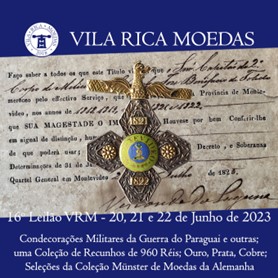 Vila Rica will hold its Auction 16 on June 20-22. The auction is internet-only and split over three sessions. It will offer a vast range of Brazilian coins from Colonial to Republican issues, in all metals, with a fine selection of gold coins including a few rarities such as 6400 Réis 1731 from Minas Gerais mint and the extremely rare and key date 1862 of the 20.000 Réis series. Featured in this auction will be a collection of military decorations of the Paraguay and Cisplatine Wars, a collection of 960 Réis overstrikes including a rare combination of 960 Réis struck over a Mexico pillar 8 Reales that has been used as host, and a fine set of coins of the Weimar Republic.
Vila Rica will hold its Auction 16 on June 20-22. The auction is internet-only and split over three sessions. It will offer a vast range of Brazilian coins from Colonial to Republican issues, in all metals, with a fine selection of gold coins including a few rarities such as 6400 Réis 1731 from Minas Gerais mint and the extremely rare and key date 1862 of the 20.000 Réis series. Featured in this auction will be a collection of military decorations of the Paraguay and Cisplatine Wars, a collection of 960 Réis overstrikes including a rare combination of 960 Réis struck over a Mexico pillar 8 Reales that has been used as host, and a fine set of coins of the Weimar Republic.
The War of Paraguay was the deadliest and bloodiest inter-state war in Latin American history and lasted from 1864 to 1870. The war began because of a conflict between Paraguay and Brazil caused by the previous Uruguayan War. Argentina and Uruguay entered the war against Paraguay in 1865, and it then became known as the "War of the Triple Alliance. As a result of the war, Paraguay was forced to cede disputed territory to Argentina and Brazil.
Some highlights from the sale follow:
Lot 22 - Brazil, 6400 Réis, 1733M. Gold. AI O281. MBC. Removed from jewelry. Still attractive and well struck. A rarity from the elusive Minas Gerais mint. Overdate. Extremely rare in any condition.
Lot 41 - Brazil, 20000 Réis, 1862. Gold. AI O682. NGC AU50. Key date and the most important coin of the whole 3rd System series. Extremely rare.
Lot 135 - Brazil, 960 Réis, 1818R. Silver. Levy - UNLISTED (RRR); AI P428a; Lup 8A. MBC. Struck over 8 Reales Mexico 1766FM Carolus III – pillar dollar. Very rare. Not reported on Levy. It comes with a certificate of authenticity issued by Abibonds, with a complete description of the coin and the overstrike. Columnario overstrikes are among the most sought after and valued and very rarely they are offered at public auctions.
The War of Paraguay was the deadliest and bloodiest inter-state war in Latin American history and lasted from 1864 to 1870. The war began because of a conflict between Paraguay and Brazil caused by the previous Uruguayan War. Argentina and Uruguay entered the war against Paraguay in 1865, and it then became known as the "War of the Triple Alliance. As a result of the war, Paraguay was forced to cede disputed territory to Argentina and Brazil.
Lot 323 - Brazil, Military Decoration. Pedro I. Medal of Distinction of the Army of the South, also known as Medal of the Baron of Laguna, or Medal Lécor. 1823. Silver and gilded silver. 7.21g; 34x26 mm. Meili 10 (var); Chao page 72 (var). Very attractive. Extremely rare and of important historical significance - it is the First Decoration of the Empire of Brazil (for the historical context of this Decoration, read the article on Decorations of the Cisplatine Campaigns at https://www.vilarimoedas.com/artigos/).The cross is surmounted by a winged dragon representing the House of Bragança. On the obverse, the center is in blue enamel, engraved with an olive branch with five leaves, placed on the Serro de Montevideo; with the inscription MONTEVIDEO at the top and four stars at the bottom. On the reverse, the center in green enamel with the legend PETRUS / I. B. I / D., meaning Petrus Primus, Brasiliae Imperator Deedit (Pedro Primeiro, Emperor of Brazil, dedicates him), surmounted by a laurel wreath. On the arms are inscribed which of the years of the conflict the decorated person served; in the case of this example 1817, 1818, 1819, 1820, 1821 and 1822.
The medal is accompanied by an original certificate dated July 20, 1823, and signed by the Viscount of Laguna himself, granting a silver cross (like the one offered here) to a Captain of the 2nd Militia Corps of São Paulo, José Bonifácio de Toledo for services rendered in 1818, 1819, 1820, 1821 and 1822. Fernando Chao at Premios y Condecoraciones in Territorio Uruguayo 1807-1830, Rosario, 2020 (also offered in this auction - see lot 397) lists 8 copies: Jacques Schulman 1924 (lot 24), Private Collection (sold at the 14th Vila Rica Coins Auction, lot 255), Revista da SNB 1938, Julius Meili (the same as in Jacques Schulman 1911), Museum Udaondo (former Enrique Penã Collection), Eugênio Teixeira Leal Museum Collection (Inventory of Banco Econômico da Bahia), another from Museo Udaondo (former Enrique Penã Collection) but with only two dates, and Ex Collection Marcelo Tibúrcio.
The example offered here is almost identical to the one illustrated in Meili (see attached photo), and certainly produced by the same goldsmith. The two notable differences are the inversion of the centers in relation to the years engraved on the arms of the cross, and the orientation of the years 1821 and 1822 - in Meili they are horizontal, while in this example they are vertical.
Lot 324 - Brazil, Military Decoration. Pedro II. Uruguay Campaign. First Class Gold Medal 1852. 25.30g; 85mm (the set); 30mm (the medal). Meili 118 (in silver, not listed in gold). Instituted by the Imperial Decree of March 14, 1852, for the allied forces commanded by the Argentine general Urquiza, and by the Brazilian Caxias, who defeated the dictator Juan Manuel de Rosas. Complete with crown, ring, ribbon, suspender/bar. EXTREMELY RARE in such completeness. UNC, with some cleaning hairlines. No more than three known pieces, only two of which are complete with original crown, ribbon, and suspender.
Lot 329 - Argentina, Military Decoration. Battle of Pago Largo, 1839. Silver. 15.23g; 38x30 mm (without ring). Cunietti 109. Very attractive. Rare. Non-original hoop. Obverse with laurels around the coat of arms of Argentina at the top and above the text MARZO 31 DE 1839 / EL GOBIERNO DE LA / CONFEDERACION ARGENT.A / AL PATRIOTIMO Y / AL VALOR above palm and olive branch, all within a large wreath of flowers; Reverse with laurels around the text VALIENTE DEFENSOR IN LOS CAMPOS DEL PAGO LARGO DE LA LIBERTAD DE LA CONFEDERACIÓN ARGENTINA Y DE LA INDEPª AMERICANA above the flags, all within the wreath of flowers.
The Battle of Pago Largo was an armed confrontation that took place on March 31, 1839, between the troops of the governor of Entre Ríos, Brigadier General Pascual Echague (who was loyal to the provincial governor of Buenos Aires at the head of Argentina's foreign relations, General de Juan Manuel de Rosas Brigade) and those of the governor of Corrientes, Colonel Genaro Beron de Astrada, killed during the fighting. After his victory, Echague's army invaded the Banda Oriental (today Uruguay), but was repelled. Ironically, the cavalry of the province of Entre Rios was commanded by Colonel Major Justo José de Urquiza, lieutenant of Echague, who, years later, in 1852, would defeat Rosas in the definitive battle of Caseros, an event that would make him leave his long government and flee to the exile in England until his death. Urquiza became the first president of the Argentine Confederation, based in Paraná, and is still revered today in Entre Rios as a provincial hero.
Lot 333 - Brazil, Military Decoration. Pedro II. Gold. 12.7g; 25x20 mm (without ring). Meili 122. Light old cleaning. Very attractive. Granted to the garrison of Fort Coimbra when, in 1864 and during the Paraguayan War, 120 Brazilians resisted the attack of 3,000 Paraguayans. On the obverse VALOR E LEALDADE
, surrounded by a laurel wreath; and on the reverse "26.27.28. DE DEZEMBRO FORTE DE COIMBRA 1864. With original Ring. Very rare. Gold medals were awarded to generals or other high-ranking officers. Given the size of the garrison, it is reasonable to assume that there would be no more than 2 or 3 high-ranking officials, making this, therefore, a very rare medal and of high historical importance.
Lot 337 - Brazil, Military Decoration. Pedro II, War of Paraguay. Surrender of Uruguayana, 1865. Gold. 9.83g; 33mm (the set); 20mm (the medal). With original ring. Meili 123 (in silver); Pratt CP 37. Only 2 or 3 known in gold and with original ring. Just a few light hairlines, and very attractive
Lot 340 - Paraguay, Military Decoration. Military Award, War of the Triple Alliance (Guerra do Paraguay), Batalla de Tataiyba, October 21, 1867. Silver. 14.52g; 30 mm. Pratt CP 12. Legend on the obverse: EL MARISCAL LOPEZ A LOS VALIENTES DE TATAIYBA. MBC/Sub. Pratt CP 12. Extremely rare in silver, and an important issue for collectors in Paraguay. All of them are regarded as unique pieces, as they were made by hand on the spot. A highlight in every collection of Paraguayan medals.
Lot 345 - Argentina, Military Decoration. War of the Triple Alliance against Paraguay. Award to those who finished the Paraguay Campaign, awarded in 1871. Gold. 11.23g; 28 mm. Cunietti 274. Pratt CP 43b. Hoop removed. Despite a light cleaning, it retains much of its original luster. Very attractive. Obverse: arms of Argentina, around EJERCITO ARGENTINO / DE OPERACIONES CONTRA EL PARAGUAY; Reverse with sun and rays, caption AL VALOR Y LA CONSTANCIA / * LA NACION AGRADECIDA *. Very rare.
The auction will take place on June 20, 21 and 22nd. Registration for bidding can be done at https://leiloes.vilaricamoedas.com/. If you need help, please feel free to contact either David or Hilton through the email info@vilaricamoedas.com and they will help you with registration. Bids can also be accepted through the Sixbid platform.
HERITAGE JUNE 2023 HONG KONG SALE HIGHLIGHTS
Here's the press release for Heritage Auctions' June 21-23 Hong Kong sale. Some great coins here. -Editor
Elite selections from ancient China through the Qing, Republic and People's Republic eras make Heritage Auctions' June 21-23 HKINF World Coins Platinum Session and Signature® Auction - Hong Kong one of the strongest and most comprehensive ever assembled by the world's leading auctioneer of coins and currency.
Among the top attractions in the auction is a Hsüan-t'ung silver Specimen Pattern Long-Whiskered Dragon
Dollar Year 3 (1911) SP63 NGC, which is among the famed Pattern issues of Luigi Giorgi that are so popular among collectors, many of whom consider them to be holy grails
among Chinese numismatics. Tops among them are the Long-Whiskered Dragon dollars of 1911, produced during the final year of the Qing Dynasty. Giorgi is known best for his portraiture of the Republic's first president, Yuan Shih-kai, immortalized on the 1914 issues utilizing the Plumed Hat
and profile portraits like the Republic Yuan Shih-kai silver Specimen Pattern L. Giorgi
Dollar Year 3 (1914) SP63 NGC that also is offered in this auction, but his most desirable design, according to historic auction results, remains the Long-Whiskered Dragon Dollar.
The world-class lots that comprise this auction make it one of the finest we have seen in a single auction,
says Cris Bierrenbach, Executive Vice President of International Numismatics at Heritage Auctions. The ‘Long-Whiskered Dragon' dollar is exceedingly popular, because the Dragon design eventually proved to be a trial concept that didn't last very long, which sends desire soaring.
Among the top draws from the provincial series are a pair of magnificent coins that have not come through Heritage Auctions in years and rarely come to market in gem preservations: a Shantung. Republic gold Pattern Dragon & Phoenix
10 Dollars Year 15 (1926) MS65+ NGC and a Shantung. Republic gold Pattern Dragon & Phoenix
20 Dollars 1926 MS64? NGC. The 10 Dollar Pattern is an extraordinary example of the very rare Pattern issue by the colorful warlord, Zhang Zongchang, whose brief era of reign over his native Shandong was nothing short of tumultuous. The offered example possesses the highest awarded grade across PCGS and NGC. The now-iconic Dragon & Phoenix
designs of the Republican issues are most attainable in silver, but those struck in gold for Shantung province at the behest of Zhang Zhongchang are nearly unheard of, a fact confirmed by their general paucity in recent auction listings and absence from numerous major collections. In the last 20 years, only a handful of these 20 Dollar Patterns have surfaced, the last at Heritage being the MS64 2014 Ultima specimen.
The auction includes a gorgeous selection of coins celebrating the years on the Chinese calendar of various animals. Included among the highlights, in terms of desireability and sheer size, are one of just three certified examples (from a mintage of just 15) of the People's Republic gold Proof Scalloped Year of the Monkey
10000 Yuan (Kilo) 2004 PR68 Ultra Cameo NGC, one of just 15 examples struck of the People's Republic gold Proof Scalloped Year of the Rooster
10000 Yuan (Kilo) 2005 PR67 Ultra Cameo NGC and the finest certified People's Republic gold Proof Scalloped Year of the Dog
10000 Yuan (Kilo) 2006 PR68 Ultra Cameo NGC, which also is from a mintage of just 15.
A Hunan. Kuang-hsü silver Specimen Pattern 50 Cents ND (1898) SP55 NGC is one of just six known examples struck in 1898; most examples are held in advanced collections and unlikely to reach the open market any time soon.
The auction includes several Kweichow Auto
dollars, led by a spectacular Kweichow. Republic Auto
Dollar Year 17 (1928) MS62 NGC that is tied for the second-finest of the type. Commissioned by governor Chow Hsi-chen to commemorate the completion of the first provincial highway in Kweichow, this issue departed from tradition by featuring the governor's car as the centerpiece of its design, a declaration not only of the import of Chinese modernization efforts, but of their successful execution. Only one other example has reached this extremely covetable state of preservation.
A British Colony. Victoria silver Proof Pattern Dollar 1865 PR65 NGC belongs to a series of patterns struck at the Royal mint one year prior to the manufacture of the currency issues with the same design, which were minted at the Hong Kong branch during its inaugural year in 1866. This absolute rarity is one of only three examples certified and ranks as the finest among its peers.
Another stellar British offering in the auction is a British Colony. Victoria 5-Piece Certified Proof Set 1866 NGC, which includes a magnificent set of Proof strikings from the first year of issue from this most coveted series: a Dollar PR61, KM10, Prid-1A; a 1/2 Dollar Proof Details (Stained), KM8, Prid-4A; a 20 Cents Proof Details (Stained), KM7, Prid-17A; a 10 Cents Proof Details (Corrosion), KM6.3, Prid-58, 11 pearl variety and a 5 Cents Proof Details (Stained), KM5, Prid-113A. Production of coins and currency for this small but historically important British colony lasted for nearly 150 years, but only those produced between 1866 and 1868 were true products of Hong Kong, making the desire for this group even greater.
Other top lots in the auction include, but are not limited to:
A Kuang-hsü gold Pattern Kuping Tael (Liang) 1907 MS61 NGC
A Republic Sun Yat-sen silver Specimen Pattern 50 Cents Year 25 (1936) SP63 PCGS
A Shanghai. Wang Yung Sheng Zuwen Yingbing ("Pure Silver Cake") of 1 Tael Year 6 (1856) AU55 NGC
Images and information about all lots in the auction can be found at HA.com/3108.
WBNA OFFERS RARE IMPERIAL BANK OF PERSIA NOTES
This article from World Banknote Auctions highlights the rare Imperial Bank of Persia notes in their upcoming sale -Editor
Banknote collectors and enthusiasts have a unique opportunity to acquire rare specimens from the Imperial Bank of Persia in the upcoming World Currency Sale 43 of World Banknote Auctions. These classic rarities, known for their impressive size, original design, and historical significance, are highly sought after by collectors worldwide. The auction presents a chance to own a piece of Iran's financial history and add a valuable item to one's banknote collection.
 Established in 1889 by Baron Julius de Reuter, the Imperial Bank of Persia played a crucial role in Iran's financial history. The institution was at its core a British company focused on profits. With a royal charter granted in Great Britain, the bank was established to support Iran's economic development under the reign of Naser al-Din Shah. The Imperial Bank of Persia operated numerous branches throughout the country, with Tehran serving as the capital and the primary hub for note issuance. Each banknote indicated a specific branch where it could be redeemed. The bank had a total of 28 branches during the note-issuing era, making it a widespread financial institution in Persia at the time. The issuance of banknotes, along with loans and increased trade, contributed significantly to the country's economic growth during that period. Banknote issuance took place from 1890 to 1932 and consisted of two distinct series. The first, issued until 1923, is the subject of this blog post.
Established in 1889 by Baron Julius de Reuter, the Imperial Bank of Persia played a crucial role in Iran's financial history. The institution was at its core a British company focused on profits. With a royal charter granted in Great Britain, the bank was established to support Iran's economic development under the reign of Naser al-Din Shah. The Imperial Bank of Persia operated numerous branches throughout the country, with Tehran serving as the capital and the primary hub for note issuance. Each banknote indicated a specific branch where it could be redeemed. The bank had a total of 28 branches during the note-issuing era, making it a widespread financial institution in Persia at the time. The issuance of banknotes, along with loans and increased trade, contributed significantly to the country's economic growth during that period. Banknote issuance took place from 1890 to 1932 and consisted of two distinct series. The first, issued until 1923, is the subject of this blog post.
 The banknotes of the Imperial Bank of Persia's are among the most beautiful banknotes issued around the turn of the century. The front of the notes displayed the Lion and Sun motif, which was the official symbol of the royal house and later became the state symbol. A portrait of Naser al-Din Shah, who ruled Iran from 1848 until his assassination in 1896, adorned the front of each banknote. The back of all denominations also featured the Lion and Sun motif at the center. The notes were printed in England by Bradbury, Wilkinson & Co. and then shipped by Tehran, where they were finalized for issue, by applying the branch of issue, date of issue and an official seal from the Persian High Commissioner. Notes utilized a standard design, but grew progressively larger with each higher denomination, and the backs are in a variety of colors.
The banknotes of the Imperial Bank of Persia's are among the most beautiful banknotes issued around the turn of the century. The front of the notes displayed the Lion and Sun motif, which was the official symbol of the royal house and later became the state symbol. A portrait of Naser al-Din Shah, who ruled Iran from 1848 until his assassination in 1896, adorned the front of each banknote. The back of all denominations also featured the Lion and Sun motif at the center. The notes were printed in England by Bradbury, Wilkinson & Co. and then shipped by Tehran, where they were finalized for issue, by applying the branch of issue, date of issue and an official seal from the Persian High Commissioner. Notes utilized a standard design, but grew progressively larger with each higher denomination, and the backs are in a variety of colors.
In this sale, the three highest denominations available are the 50 Tomans, 100 Tomans, and the exceptionally rare 500 Tomans. The extremely rare 1000 Tomans is the only denomination missing from the auction. Among the notes offered, the 50 Tomans were printed with three prefixes and had a total circulation issue of 39,500 notes. However, according to the final accounting of the first series in 1931, only 114 of these notes remained outstanding. Additionally, there were 122 notes listed as stolen,
which should have likely been included in the count of outstanding notes. It is worth noting that the reported number of stolen notes may have been exaggerated, as the responsibility of the Imperial Bank of Persia was limited to paying the Iranian government for outstanding notes, excluding those reported as stolen. Nevertheless, it is evident that an issued 50 Tomans note is exceedingly rare, to say the least. Similarly, the 100 Tomans note is also very rare, with 27,500 notes issued, 90 reported as stolen,
and 63 outstanding as of 1931. The rarity of the 500 Tomans is even more pronounced, as only 1,400 notes were printed for circulation, and there is only a single note outstanding.
The banknotes from the Imperial Bank of Persia, particularly the Qajar series, are highly coveted among world banknote collectors. Their impressive size, classic design, and rarity make them favorites among enthusiasts. However, higher denominations like the 500 Tomans are exceptionally rare and infrequently appear in the market, making this auction a unique opportunity for advanced collectors to acquire these iconic pieces of history. The World Banknote Auctions sales featuring rare specimens from the Imperial Bank of Persia brings forth an exciting opportunity for collectors to acquire banknotes of immense historical and cultural value. With limited availability, these banknotes offer a glimpse into Iran's financial past and the economic aspirations of the nation during the reign of Naser al-Din Shah.
The following lots are available in World Currency Sale 43:
Lot 44369: Persia ND (1890-1923) P-1as PMG Choice UNC 63 1 Toman (Specimen)
Lot 44370: Persia ND (1890-1923) P-2s PMG About UNC 50 2 Tomans (Specimen)
Lot 44371: Persia ND (1890-1923) P-2As PMG Choice Extremely Fine 45 3 Tomans (Specimen)
Lot 44372: Persia ND (1890-1923) P-3s PMG Choice UNC 64 5 Tomans (Specimen)
Lot 44373: Persia ND (1890-1923) P-4s PMG Choice UNC 64 10 Tomans (Specimen)
Lot 44374: Persia ND (1890-1923) P-5s PMG Choice UNC 64 20 Tomans (Specimen)
Lot 44375: Persia ND (1890-1923) P-6s PMG About UNC 53 25 Tomans (Specimen)
Lot 44376: Persia ND (1890-1923) P-7s PMG Choice Extremely Fine 45 50 Tomans (Specimen)
Lot 44377: Persia ND (1890-1923) P-8s PMG Extremely Fine 40 100 Tomans (Specimen)
Lot 44378: Persia ND (1890-1923) P-9s PCGS Gem UNC 66 PPQ 500 Tomans (Specimen)
To read the complete article, see:
World Banknote Auctions Offers Rare Specimens from the Imperial Bank of Persia
(https://www.worldbanknoteauctions.com/featured/world-banknote-auctions-offers-rare-specimens-from-the-imperial-bank-of-persia/)
TRADE DOLLARS RE-MONETIZED IN 1965
Last week we discussed Bill Cowburn's 2007 presentation on U.S. Trade Dollars. In the I'm-pretty-sure-I-used-to-know-this-but-probably-forgot department, this Stack's Bowers blog article by Chris Bulfinch notes that the coins were addressed in the 1965 coinage act. -Editor
Despite being created for international circulation, United States trade dollars circulated within the borders of the United States in the 19th century, causing such problems that they were demonetized three years after their introduction. Their lack of legal tender status after 1876 failed to dissuade employers and merchants from circulating the coins.
Introduced in 1873 to compete with heavier world silver coins like the Mexican peso popular with merchants in China and throughout Asia, trade dollars initially enjoyed legal tender status in the United States in sums up to $5. As silver prices fell after 1873, the trade dollar's intrinsic value fell below one dollar and workers and consumers were soon inundated with the coins. Merchants could make a profit having their silver coined into trade dollars (even if they had no intention of sending the coins overseas) and began circulating them domestically.
Responding to widespread abuse, Congress demonetized trade dollars on July 22, 1876. Circulation strikes continued to be produced through 1878, though the Mint stipulated that the coins had to be used for international trade. Controls were lax and the coins, which circulated at a significant discount after demonetization, continued to be used in the United States. In 1883, a New York Times article denounced trade dollars as bastard coins.
Less-than-scrupulous employers sometimes paid illiterate/unwitting workers with trade dollars even after they were demonetized. Beginning in 1879, only Proof coins were struck. Authority to coin trade dollars was officially repealed in 1887.
The Coinage Act of 1965, which authorized copper-nickel clad dimes, quarters, and half dollars, remonetized trade dollars, though by that time workers would have been coming out ahead if they were paid with these coins at their face value.
To read the complete article, see:
DID YOU KNOW THAT TRADE DOLLARS WERE DEMONETIZED IN 1876 AND RE-MONETIZED IN 1965?
(https://stacksbowers.com/did-you-know-that-trade-dollars-were-demonetized-in-1876-and-re-monetized-in-1965/)
To read the earlier E-Sylum article, see:
VIDEO: U.S. TRADE DOLLARS
(https://www.coinbooks.org/v26/esylum_v26n22a11.html)
COIN OF THE YEAR AWARDS MOVE TO ANA SHOW
The Coin of the Year Awards will be held at the Pittsburgh ANA World's Fair of Money this year. -Editor
 It's a big year for the Coin of the Year Awards. Not only will the program celebrate 40 years, but it will also conduct an in-person awards ceremony after a three-year hiatus due to the pandemic. In partnership with the American Numismatic Association, the ceremony will be held during the 2023 World's Fair of Money® in Pittsburgh, Pa. The event is set for 3:30-4:30 p.m. on Wednesday, Aug. 9, at the David L. Lawrence Convention Center.
It's a big year for the Coin of the Year Awards. Not only will the program celebrate 40 years, but it will also conduct an in-person awards ceremony after a three-year hiatus due to the pandemic. In partnership with the American Numismatic Association, the ceremony will be held during the 2023 World's Fair of Money® in Pittsburgh, Pa. The event is set for 3:30-4:30 p.m. on Wednesday, Aug. 9, at the David L. Lawrence Convention Center.
The Coin of the Year program is an internationally conducted competition presented by World Coin News to recognize and encourage outstanding coin design and innovation in coin production worldwide. This 40th program will honor coins dated 2022 in 10 categories of competition and one overall winner as decided by an international panel of judges
As we mark Coin of the Year's 40-year milestone of honoring the best of the best in coins from around the world, we are excited to be celebrating with an in-person ceremony,
said Maggie Pahl, COTY co-coordinator. We welcome the World's Fair of Money® as a sponsor and look forward to holding our event in conjunction with one of the world's premier numismatics shows.
The COTY awards are a wonderful opportunity for coin collectors to engage their interest in the finest modern coins produced worldwide,
said Kim Kiick, executive director of the American Numismatic Association. The ANA is thrilled to host the COTY awards at our World's Fair of Money® in Pittsburgh this August, which we see as the start of a beautiful collaboration.
The COTY Nominee selection process began with 500 coins from 50 countries, with a judging panel of 100 experts from around the world voting to determine 10 deserving coins in 10 categories of competition. That same panel then narrows it down to 10 finalists: the winner of each category. A final vote determines one of those 10 coins to earn top honors, the Coin of the Year.
We began with 25 percent more coins and 50 percent more nominators this year and produced a head-turning array of wonderful coinage for the 40th COTY 100,
said Tom Michael, COTY co-coordinator. We're pleased as can be to honor the 10 that rise to the top at this year's World's Fair of Money.
To read the complete article, see:
Coin of the Year Ceremony Moves to World's Fair of Money®
(https://www.numismaticnews.net/world-coins/coin-of-the-year-ceremony-moves-to-worlds-fair-of-money-)
ANS OLD NEIGHBOR HISPANIC SOCIETY REOPENS
While the American Numismatic Society has long since moved from its upper Manhattan building, its neighbor on the plaza (and fellow beneficiary of the largesse of collector Archer M. Huntington) has recently been renovated. The Wall Street Journal published two articles this week with some background on the buildings. -Editor
The partial reopening of the Hispanic Society Museum & Library last week as part of a continuing renovation was an auspicious event. With one of the finest collections of its kind in the country, it offers both superb Old Master paintings and an innovative interpretation of literary and visual culture that was unique at the institution's founding and remains impressive today.
The Hispanic Society, established in 1904 by the American scholar and collector Archer M. Huntington as a center for the study of Spanish, Portuguese and Latin American art and culture, is a little-known jewel located in New York's Washington Heights. It is currently in the midst of an ambitious project to upgrade its three landmark buildings and restore Audubon Terrace, where it sits.
Unusual for an institution reopening after a period of dormancy, the Hispanic Society has chosen not to display some of the foremost gems of its collection, paintings by El Greco, Velázquez, Zurbarán and Goya. These recently returned from a lengthy Collection Highlights
tour while the museum was closed, and are scheduled to be reinstalled on a selective, rotating basis beginning this fall.
The connection to the ANS building comes in the second article about the Hispanic Society restoration. -Editor
The Hispanic Society was founded in 1904 by Archer M. Huntington, whose family's railroad fortune gave him free rein to indulge his love of Spanish art and literature. Believing that the public should have access to his private collection, he found a site at 155th Street and Broadway in New York's then fashionable Washington Heights. There he built the superb museum and library that is one of New York's triumphs of Renaissance Revival architecture.
The vast architectural ensemble on which the Hispanic Society sits is itself somewhat accidental. Huntington built his museum and library as a freestanding object on a terrace, a jewel box in a park. But no sooner had he completed his museum than he was coaxing other institutions, on several of whose boards he sat, to join him. He would give them building sites on condition that they build within five years and on plans approved by him.
The first two were built in 1909, the Numismatic Society to the west and the American Geographical Society across the terrace to the north. The Museum of the American Indian followed in 1916, adjoining the Hispanic Society to the east. The last to build was the American Academy of Arts and Letters, added to the far west of the terrace in 1921. It is perhaps the largest collection of learned societies ever to be shoehorned onto a city block.
All of these buildings, except for the American Academy, were designed by Charles P. Huntington, Archer's cousin. (He also designed Our Lady of Esperanza, built to give the complex a Catholic church in which Spanish was spoken.) They have an exquisite visual unity that comes from their construction in Indiana limestone, their continuous cornice height and the repetition of the colossal Ionic order. Arrayed on a monumental axis over 500 feet in length, they represent the urbanism of the City Beautiful at its best.
Or rather would have, if the axis actually led somewhere. By the time Huntington realized he was building a cultural acropolis, developers had taken the parcel at the west end of his site. Rather than pointing majestically to the Hudson and the Palisades beyond, his formal ensemble leads to the 11-story Riviera apartments, at whose unlovely brick buttocks its heroic axis dies.
Beginning in the 1980s, most of the cultural institutions pulled up stakes and moved elsewhere. But this presented the Society with an opportunity. It could now expand eastward into the former Museum of the American Indian (whose collections had been transferred to the Smithsonian). Here it will be able to display more of its permanent collection, the bulk of which is in storage, but also have room for temporary exhibitions.
Google Maps has a few photos of the ANS building taken in 2022. Who owns the building today? -Editor
To read the complete articles (subscription required), see:
Treasures From Joaquín Sorolla y Bastida and More at the Hispanic Society
(https://www.wsj.com/articles/overlooked-treasures-from-a-rich-trove-fc602b90)
The Hispanic Society Museum & Library's Quiet Restoration
(https://www.wsj.com/articles/a-modest-upgrade-for-a-grand-building-73e07ad5)
To view the Google photos, see:
https://goo.gl/maps/39Z8eK2eyLcCwKW97
https://goo.gl/maps/xMy6XRx7KXfnBBiCA
THE BOOK BAZARRE
COLORADO WAREHOUSE SHIPS TRUMP BUCKS
As the U.S. election season nears, we are going to see more and more articles about the candidates, and some of them will involve numismatic or semi-numismatic items like political overstamps on coins and paper money, or wholesale creations like these "Trump Bucks." -Editor
It's definitely not the Denver Mint, but inside a Colorado warehouse, workers handle things like coins and bills that feature Donald Trump's image.
NBC News investigated the Trump Bucks
marketing ploy in which companies use the warehouse in Aurora to distribute items like a $10,000 Trump Diamond Banknote
that people can buy in bulk for hundreds of dollars.
The report featured victims, including an Alabama grandmother who tried to cash in her Trump Bucks
at a bank, only to be told she had been scammed.
The investigation highlighted several companies that list the warehouse as an address and a place where people can send their purchases in for a refund.
The warehouse located in the 19000 block of East 35th Drive is managed by ShipOffers, a company that serves as a fulfillment and distribution operation for the Trump Bucks
companies and other entities that sell vitamins and supplements online.
The author of this article visited the warehouse but was not allowed to see any of the Trump Bucks
by an onsite manager.
Another ShipOffers manager reached by phone stressed that her company is a third-party company
that does not make or sell the Trump Bucks.
The manager declined to comment about the NBC News investigation.
NBC News reported there is no criminal investigation into the companies and that there is no indication Trump himself is officially connected to the Trump Bucks
marketing efforts.
Since the network's investigation, some of the websites that were selling the imitation currency have stopped working.
To read the complete article, see:
'Trump Bucks' shipped out from Colorado warehouse
(https://www.9news.com/article/news/investigations/trump-bucks-shipped-colorado-warehouse/73-ffa0d3d0-dc44-49da-9d53-7ef0565a63e9)
THE MAN WHO INVENTED THE TRILLION-DOLLAR COIN
Pablo Hoffman passed along this great New York Magazine profile of The Man Who Invented the Trillion-Dollar Coin. Thanks! -Editor
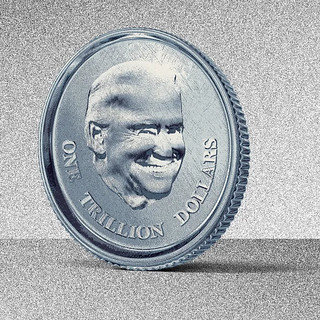 About a dozen years ago, a pseudonymous commenter on a financial website, writing under the name Beowulf, presented an unusual solution for a debt-ceiling standoff: If the federal government was at risk of default, and Congress couldn't agree to either cut spending or raise the borrowing limit cleanly, couldn't it simply mint a trillion-dollar coin?
About a dozen years ago, a pseudonymous commenter on a financial website, writing under the name Beowulf, presented an unusual solution for a debt-ceiling standoff: If the federal government was at risk of default, and Congress couldn't agree to either cut spending or raise the borrowing limit cleanly, couldn't it simply mint a trillion-dollar coin?
Beowulf had come across a 1997 law that, in response to requests from coin collectors, gave the Treasury the power to mint platinum coins of any denomination. (Collectors had complained that even coins available at the time with the smallest face values were still too expensive to afford.) The law started as a way to make collectible coins cheaper, but unlike every other law regulating new coins, this one did not establish a specific face value or limit the number of coins produced.
Congress screwed up,
Beowulf wrote. By passing the law, it had given the president the authority to direct the secretary of the Treasury to mint a coin of any value — say, $1 trillion — and deposit it in the Federal Reserve, which would be legally obligated to accept it. Ultimately, the coin's deposit would result in $1 trillion in government revenue or, with a coin of a different denomination, however much was needed to continue to pay its bills and avoid a default. The catch is, it's gotta be made of platinum,
Beowulf wrote. Ditto the balls of any president who tried this.
In the time since, the idea has gained an unexpected acceptance among policymakers and economists. In 2013, Representative Jerry Nadler said that the idea sounds silly, but it's absolutely legal.
Shortly after, Paul Krugman asked himself in the New York Times if the president should be willing to mint the coin to avoid default. His response? Yes, absolutely.
Phillip Diehl, a former director of the Mint and Treasury chief of staff who co-wrote the 1997 law, allowed that a coin with a specific denomination of $1 trillion was an unintended consequence
but maintained that the possibility was always conceivable. In principle, there is nothing new,
he has said. Any court challenge is likely to be quickly dismissed.
In 2020, Representative Rashida Tlaib sponsored a plan to mint two coins to fund pandemic aid, and this year both Treasury Secretary Janet Yellen and Federal Reserve chair Jerome Powell have faced questions about using the coin to end the standoff. Each registered objections, but neither would rule it out.
As it turns out, Beowulf is not an economist or a professional policy wonk. He's a Georgia lawyer named Carlos Mucha. Criminal defense, shareholder disputes, a little of everything,
he told me recently. He's a tinkerer — Jack of all trades, master of none,
he says — and his frequent visits to the comments sections of a set of financial websites were a kind of hobby.
What got me thinking about it was that I was reading that people were using their credit cards to buy tens of thousands of U.S. dollar coins from the Mint just to get the credit-card points,
he said. At the time, the Mint had free shipping and handling, and since it's from the government, the coins are tax free.
They would charge $10,000, get ten thousand one-dollar coins, and use the coins to pay off their card. This really happened — one such dollar coiner told The Wall Street Journal that he took 15,000 coins straight from the delivery truck to the trunk of his car, to more easily drive them to the bank. You don't have to do that too many times to get a free first-class ticket,
Mucha said.
A few savvy points hounds found a way to create free flights out of thin air. But Mucha was more fascinated by the other side of the transaction. The more interesting point is that after all the expenses and the shipping and handling, the Mint's profit on every dollar coin was 80 cents,
he said. The path of a coin from the Mint to your pocket goes like this: The Mint creates a dollar coin, then sells it to the Federal Reserve at its face value, which, in turn, sells it to a bank, where it enters the broader economy. In these transactions, the bank and the Fed spend a dollar to get a dollar. But the Mint receives a dollar for a coin that cost only about 20 cents to make. The difference between the face value of the coin and the cost of producing it, known as seigniorage, is 80 cents — revenue that would appear on the Mint's books and could be sent to the Treasury to pay down the deficit.
This is sometimes called making money by making money. Mucha's coin would work on the same principle. You don't think about it, but one of the powers of the government is to create money by the stroke of a pen, minting coins,
he said.
Mucha felt especially vindicated by the responses from Yellen and Powell earlier this year when asked about the possibility of minting a trillion dollar coin. Yellen simply said it was up to the Federal Reserve. It truly is not by any means to be taken as a given that the Fed would do it,
she said. It's up to them.
A few days later, a reporter followed up with Powell to ask if the Fed would do whatever the Treasury directs
to resolve a crisis, or if it would perform its own analysis first.
All he said about it was that ‘we are Treasury's fiscal agent, and I'll leave it at that,'
Mucha said. That's a very lawyerly answer. An agent works for a principal. So basically, he was saying, ‘If they deposit money, we gotta take it.'
It was an extremely diplomatic game of passing the buck, but the subtext was clear: The chairman of the Federal Reserve, the most powerful monetary official in the world, had been asked to reject an idea hatched by a pseudonymous blogger in 2010, and his sense of professional duty wouldn't let him do it.
To read the complete article, see:
The Man Who Invented the Trillion-Dollar Coin An Atlanta lawyer was just spitballing on a financial blog. He didn't expect Washington to listen.
(https://nymag.com/intelligencer/2023/05/the-man-who-invented-the-trillion-dollar-coin.html)
To read some earlier E-Sylum articles, see:
FORMER U.S. MINT DIRECTOR MOY ON THE TRILLION DOLLAR COIN
(https://www.coinbooks.org/esylum_v16n02a22.html)
FIRM MARKETS FANTASY TRILLION DOLLAR COIN
(https://www.coinbooks.org/esylum_v16n09a18.html)
MORE ON THAT TRILLION-DOLLAR COIN
(https://www.coinbooks.org/v20/esylum_v20n04a33.html)
TRILLION-DOLLAR COIN SILLY SEASON AGAIN
(https://www.coinbooks.org/v24/esylum_v24n40a24.html)
ARTISTS' VISIONS OF TRILLION-DOLLAR COINS
Some artists have been having fun with the concept of a trillion dollar coin. -Editor
[T]he trillion-dollar coin may fade from memory. But the debt ceiling still exists, and Congress will be negotiating over it again in a few years. It's likely the idea will reemerge as a possible work-around, picking up a new group of adherents.
Because what really matters now is that the trillion-dollar coin has gone from the esoteric corners of finance-based internet to become a mythical beast imprinted in the minds of all policymakers. But given that it's still just a figment of the populace's imagination, there are as many different mental images of the coin as there are minds in the country.
So we asked some of the best designers around—Fay Design, Order, Athletics, and Buck—to come up with some real designs. In a way, these are more than blueprints for a physical coin—they are the symbol of a creative, if controversial, approach to resolving an ever-returning financial dilemma.
GET OUT OF DEBT FREE COIN BY FAY
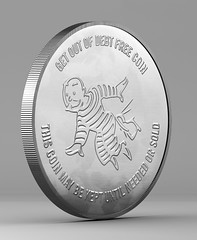 A play on Monopoly's
A play on Monopoly's Get Out of Jail Free
card, the Get Out of Debt Free coin questions: What even is money?! Does it hold any actual value? Is it just a political bargaining token? What's another trillion when the U.S. is already (somehow) pushing up against its $34.1 trillion debt limit? The value of this coin is not displayed, as who actually knows what it's worth, what it's paying for, or how the U.S. has such a massive deficit to begin with.
SOARING EAGLE BY BUCK
The trillion-dollar coin serves as a visionary solution to the challenges posed by America's debt ceiling. The design portrays a majestic bald eagle soaring above clouds and mountains. It symbolizes abundance, and a commitment to responsible stewardship of our wealth. It serves as inspiration to implement fiscal policies that safeguard our prosperity. The mountains give way to a recursive pattern, reinforcing the notion of growth and abundance. In the background, god rays evoke hope for a prosperous future.
CUBE BY ORDER
An absurdly unimaginable and unfathomable number distilled into a single coin deserves an absurdly grotesque design, which Order is proposing with this trillion-dollar coin.
It doesn't go in your pocket, or purse, or any place that can slip down a drain, so its form is annoyingly chunky—a cube—an empty vessel of the economic construct we all live in.
To read the complete article, see:
A trillion-dollar coin sounds unbelievable. Here's what it could look like
(https://www.fastcompany.com/90903322/what-does-the-trillion-dollar-coin-look-like)
BRITISH ARTIST CREATES MONEY SKULLS
Money is a perennial topic of artists. This article discusses a British artist's "Money Skulls" gold candy bars and a bloody ATM. -Editor
The British artist Imbue has shredded more than £1 million ($1.3 million) in cash to create a collection of money skulls as a form of protest against the cost of living crisis and the money power structure in the U.K. The skulls feature in an exhibition that opens today next to the Bank of England in the City of London, at a pop-up space at 5 Royal Exchange, as part of London Gallery Weekend.
Taking its title from the two subjects said to be unavoidable, Death + Taxes
features a new body of money-themed work by the pseudonymous artist, who often creates wry comments on aspects of contemporary society, from capitalism to religion.
Among the highlights are 12 human-sized resin skulls, which contain shredded currencies in British pounds, U.S. dollars and Euro. The artist declined to reveal the sources of the cash used for the skulls, but organizations that mint and distribute currencies like the Federal Reserve do release money that has been shredded after it became too worn or damaged for circulation as souvenirs, as well as for artistic and commercial purposes.
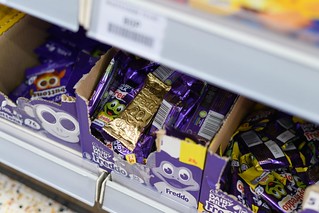 The show also includes a series of seven, 24-karat gold-plated packages of Freddo chocolate bars, a satirical work mocking the staggering inflation in the cost of everyday objects. The retail price of Cadbury's frog-shaped chocolate bar has been cited by economists over the years as an indicator reflecting inflation trends in the U.K. Dubbed the Freddo Index, the price of the beloved kids' treat has gone up by 400 percent since it first hit the shelves in the 1990s.
The show also includes a series of seven, 24-karat gold-plated packages of Freddo chocolate bars, a satirical work mocking the staggering inflation in the cost of everyday objects. The retail price of Cadbury's frog-shaped chocolate bar has been cited by economists over the years as an indicator reflecting inflation trends in the U.K. Dubbed the Freddo Index, the price of the beloved kids' treat has gone up by 400 percent since it first hit the shelves in the 1990s.
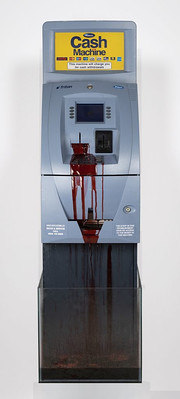 The price of Brexit is another major theme of the show. The installation piece Brexit Bill is made from a receipt printer that spits out the real-time costs and financial damage following the U.K's departure from the European Union. Visitors can also get their financial futures read by a Victorian fortune-telling machine. And an installation of a
The price of Brexit is another major theme of the show. The installation piece Brexit Bill is made from a receipt printer that spits out the real-time costs and financial damage following the U.K's departure from the European Union. Visitors can also get their financial futures read by a Victorian fortune-telling machine. And an installation of a bleeding ATM
reflects how everyday people feel about the current economic situation.
The choice of staging an exhibition in a pop-up space next to the Bank of England, the U.K.'s central bank, rather than in a regular art gallery, aims to echo the show's exploration of themes about money, the artist told Artnet News. The City of London, the U.K. capital's historic financial district, is an area that traditionally represents special status and power over ordinary citizens.
The show's installation pieces are not for sale but related editioned works, including the skulls (in an edition of 50) and the golden Freddos (in an edition of 100), will be available for sale on the artist's website 48 hours after the exhibition opens, priced between £95 ($119) and £1,000 ($1,253). The exhibition runs through June 11.
To read the complete article, see:
A U.K. Artist Filled Resin Skulls With $1 Million in Shredded Cash to Protest the Cost of Living Crisis. You Can Take One Home for $1,250
(https://news.artnet.com/art-world/cash-skull-uk-cost-of-living-2313755)


